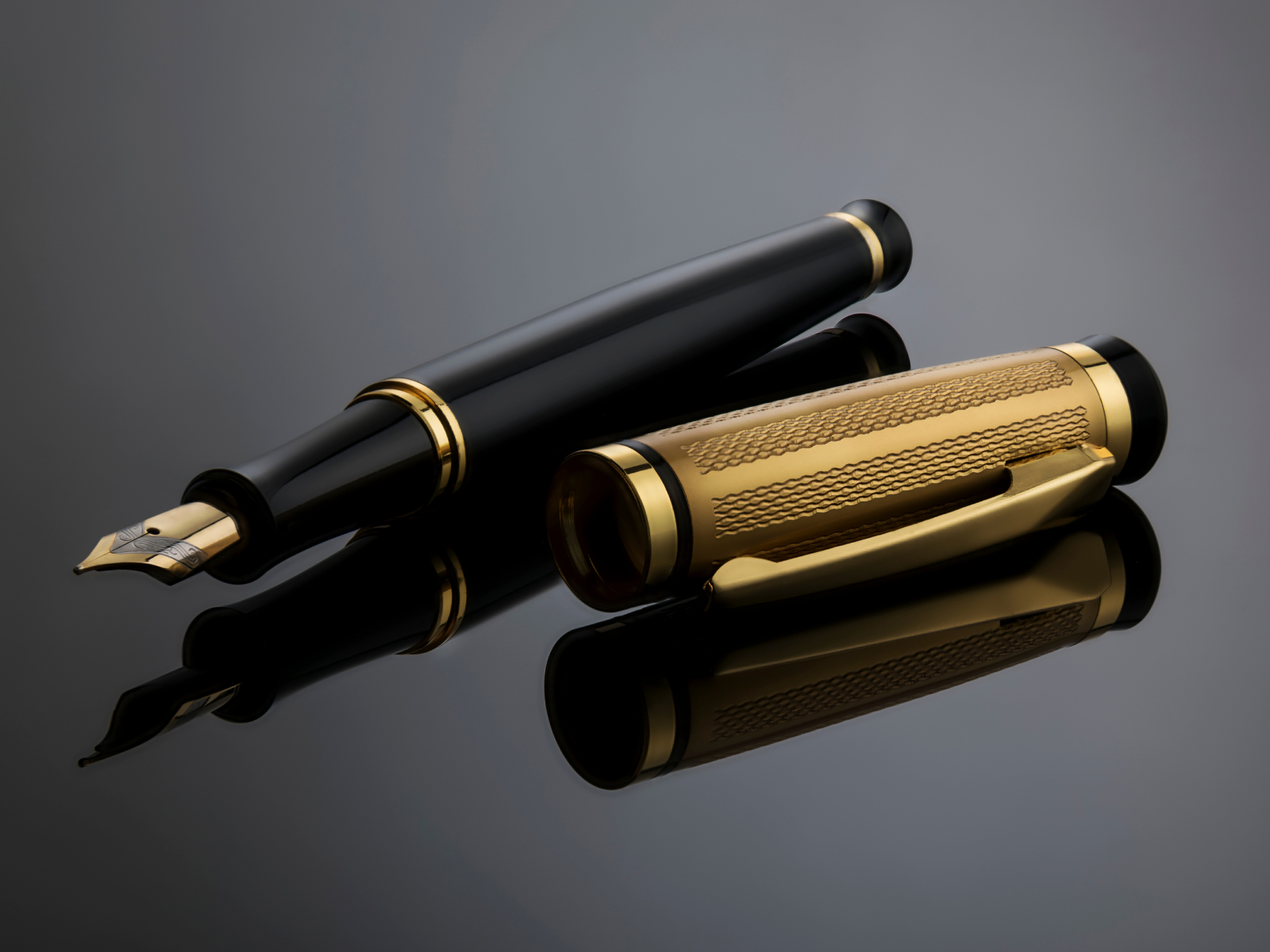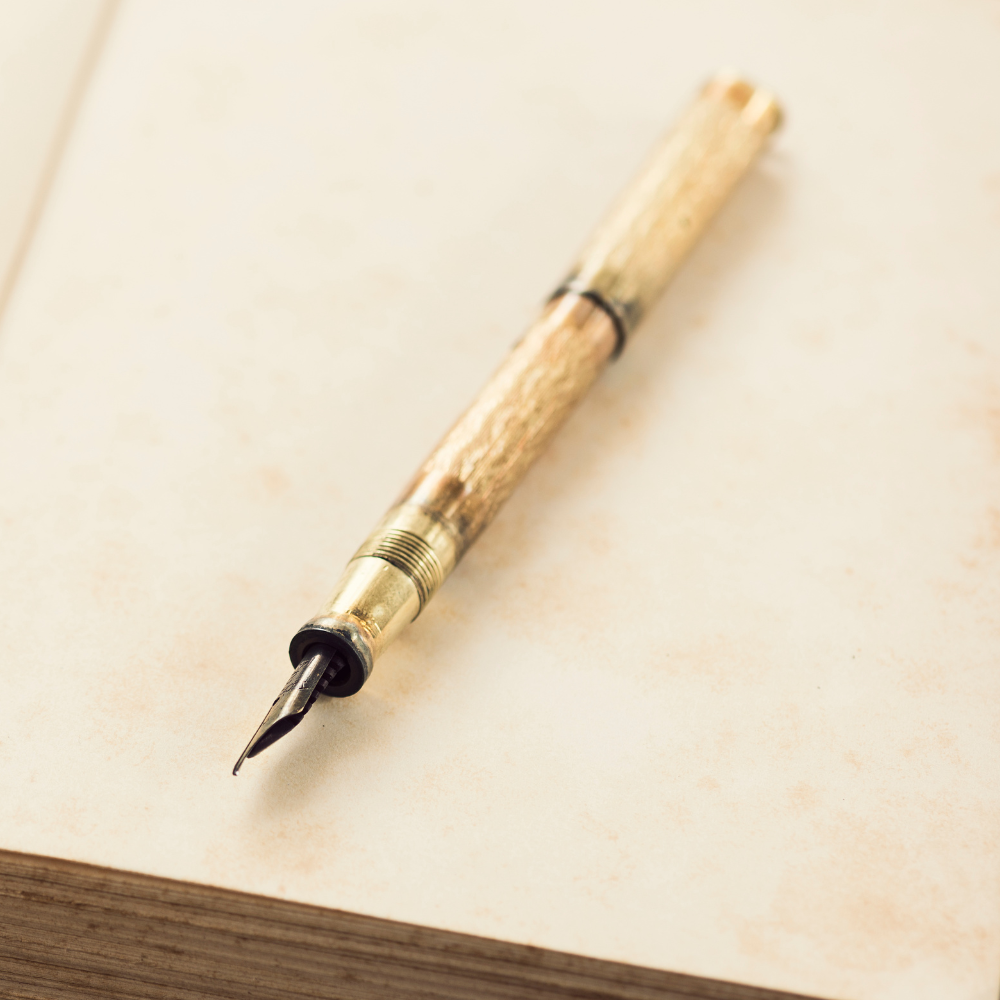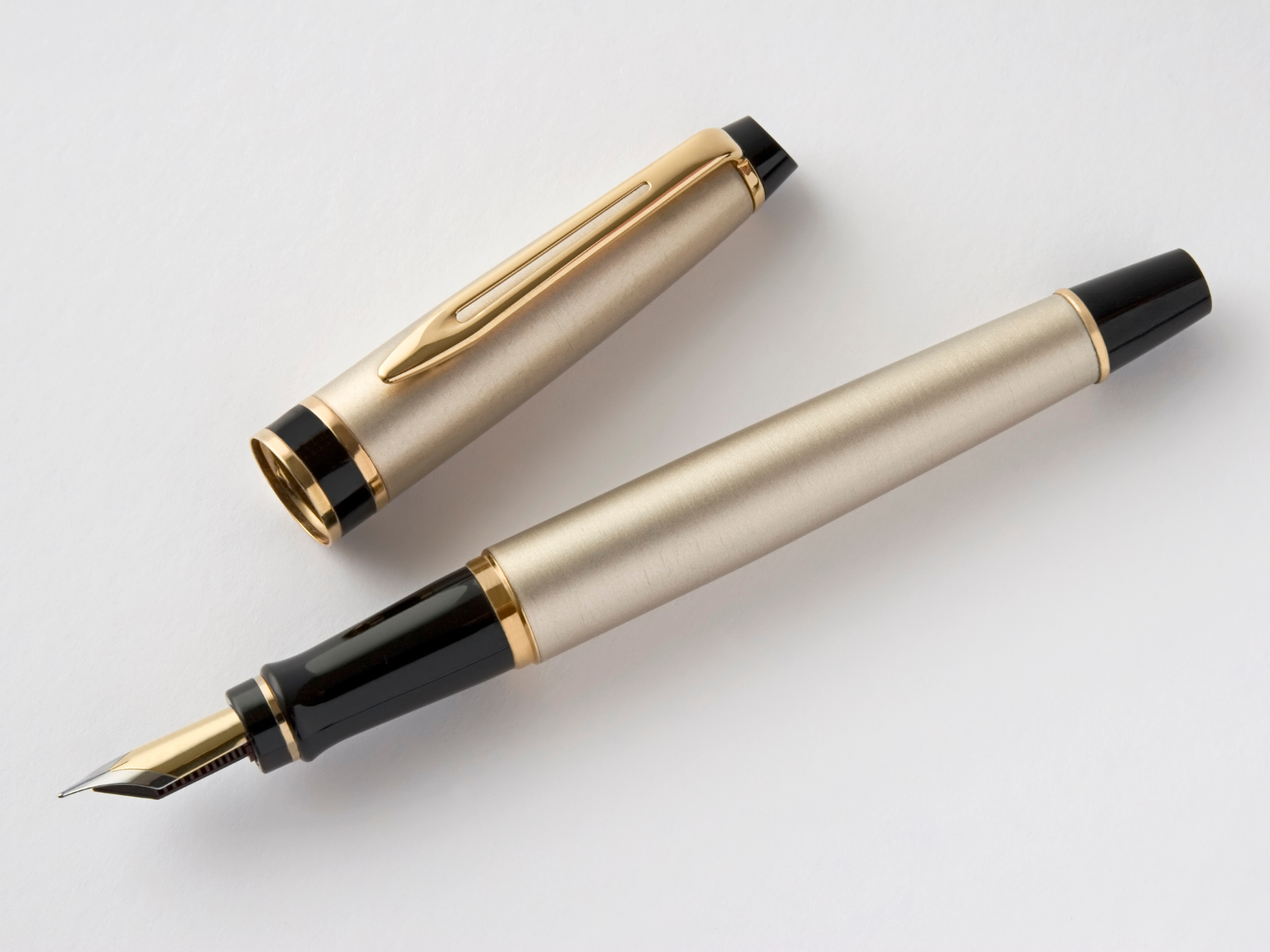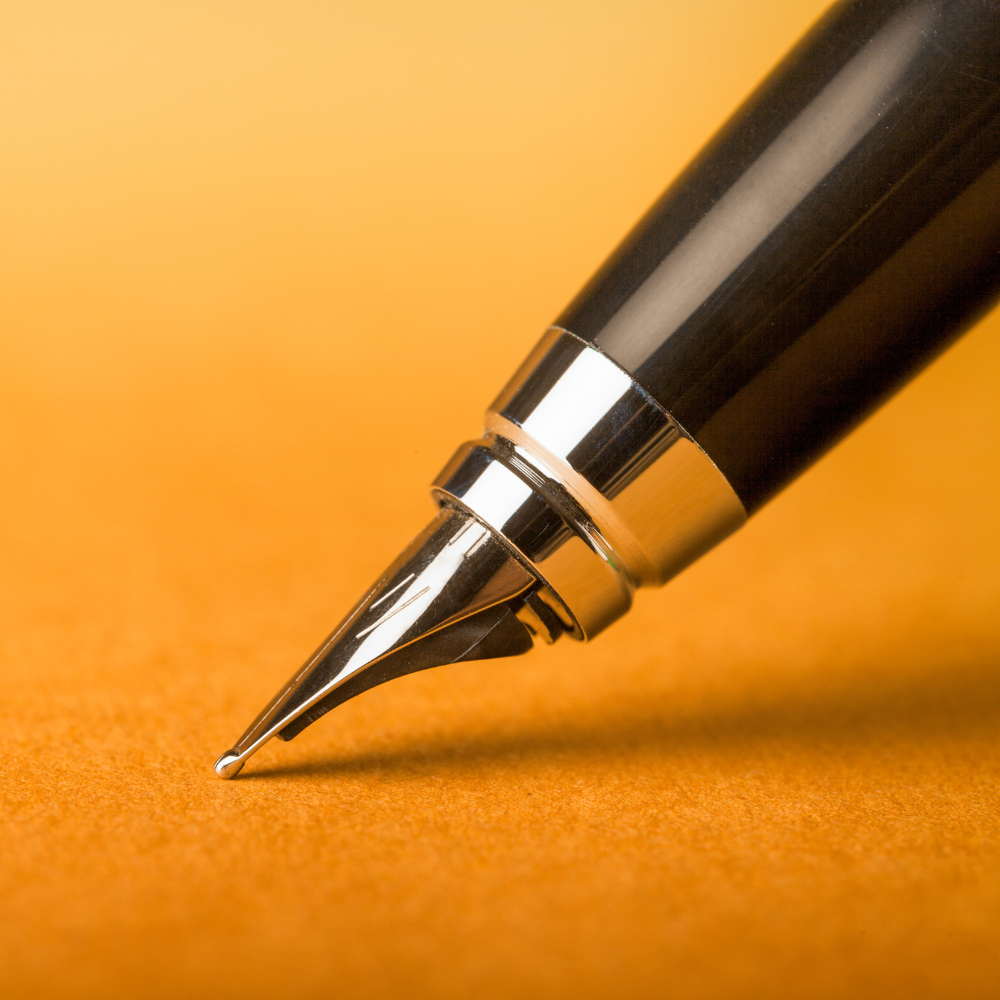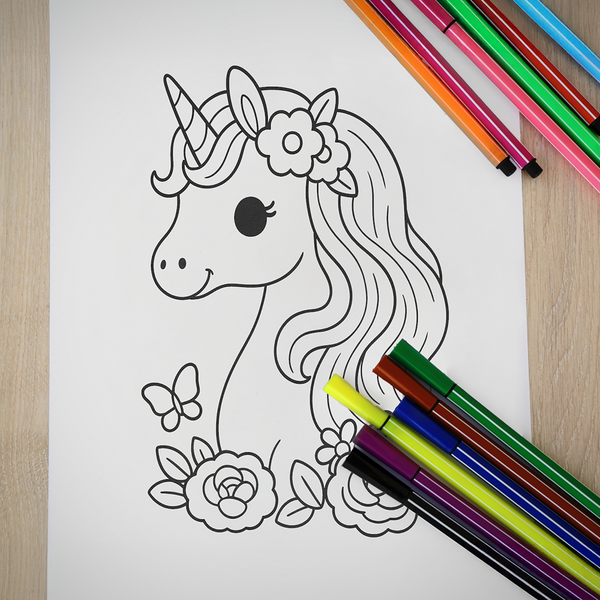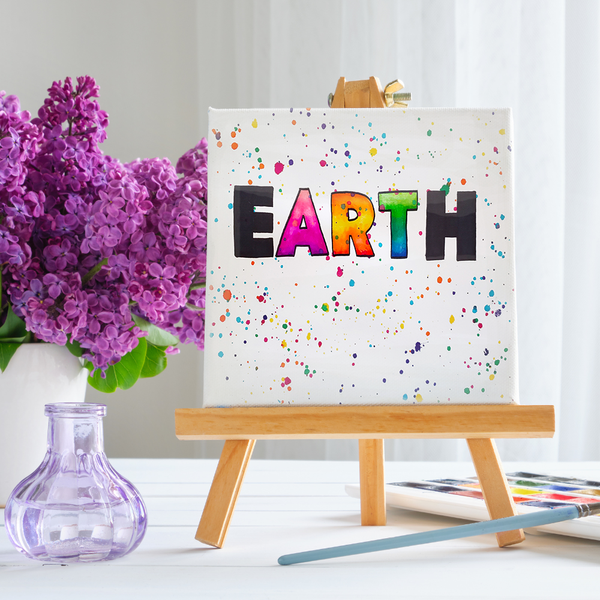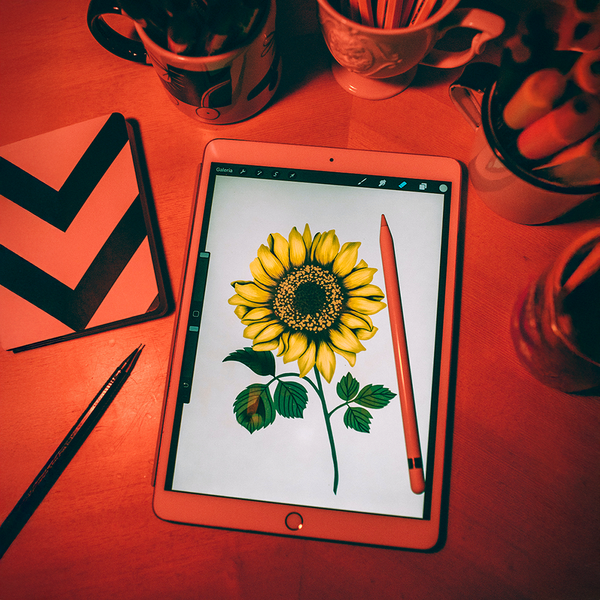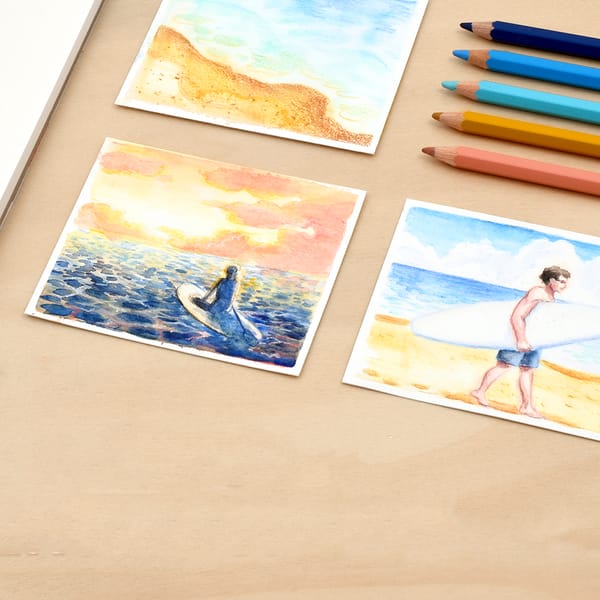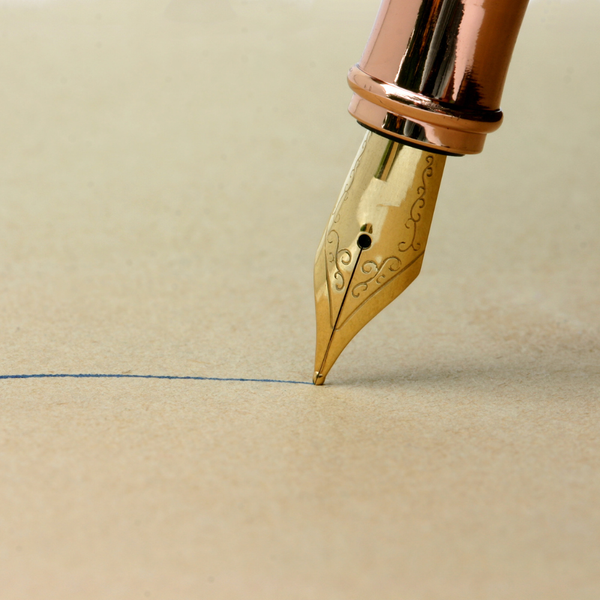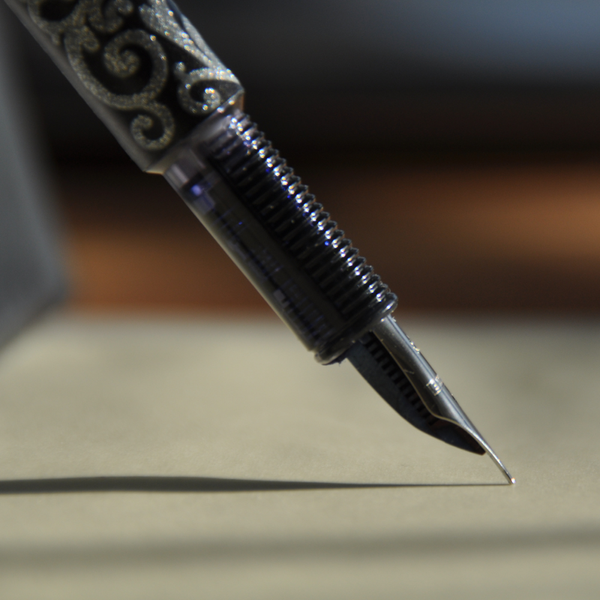For many artists, the battle for the perfect pen has been raging on for years.
The markers dry out too fast, the brush pens require constant refill, pencils don't deliver the desired ink flow, and the ballpoints create too much friction on paper.
It's a struggle to find a pen that finally meets all the requirements - it should be smooth, consistent, and easy to use so that it doesn't get in the way of your creative mojo.
And, in all this struggle to find the perfect pen, often, we ignore the fountain pen.
But, is it worth giving a chance? Is a fountain pen good for art?
From sketching lifelike portraits to detailing elaborate designs, this underestimated writing utensil holds hidden potential for expanding your creative range.
Ready to release your inner creator or give new life to your everyday doodles?
Join us as we take the fountain pen out of hiding and into the light, exploring its nuanced capabilities and why it deserves a place in any artist's arsenal.
The truth is, with a little know-how this often overlooked writing companion could become your new favorite way to put paint to paper.
Whether you're a doodling beginner or a seasoned professional, in this post I'll unveil how a fountain pen could elevate your art in surprising ways.
Get ready to have your assumptions flipped as we deep dive into the unique properties of fountain pens and provide examples of different artists using them in masterful fashion.
By the end, I promise you'll be itching to add one of these hidden gems to your toolkit.
Let's dive in to the fine world of pen and ink art!
Key Takeaways:
- Fountain pens offer unparalleled control and versatility for artists, making them suitable for a range of artistic applications.
- The variety of nib sizes and types, along with the vast selection of ink properties, allows for a broad spectrum of line qualities and effects.
- Proper maintenance and understanding of fountain pen mechanics are essential for optimizing their use in art.
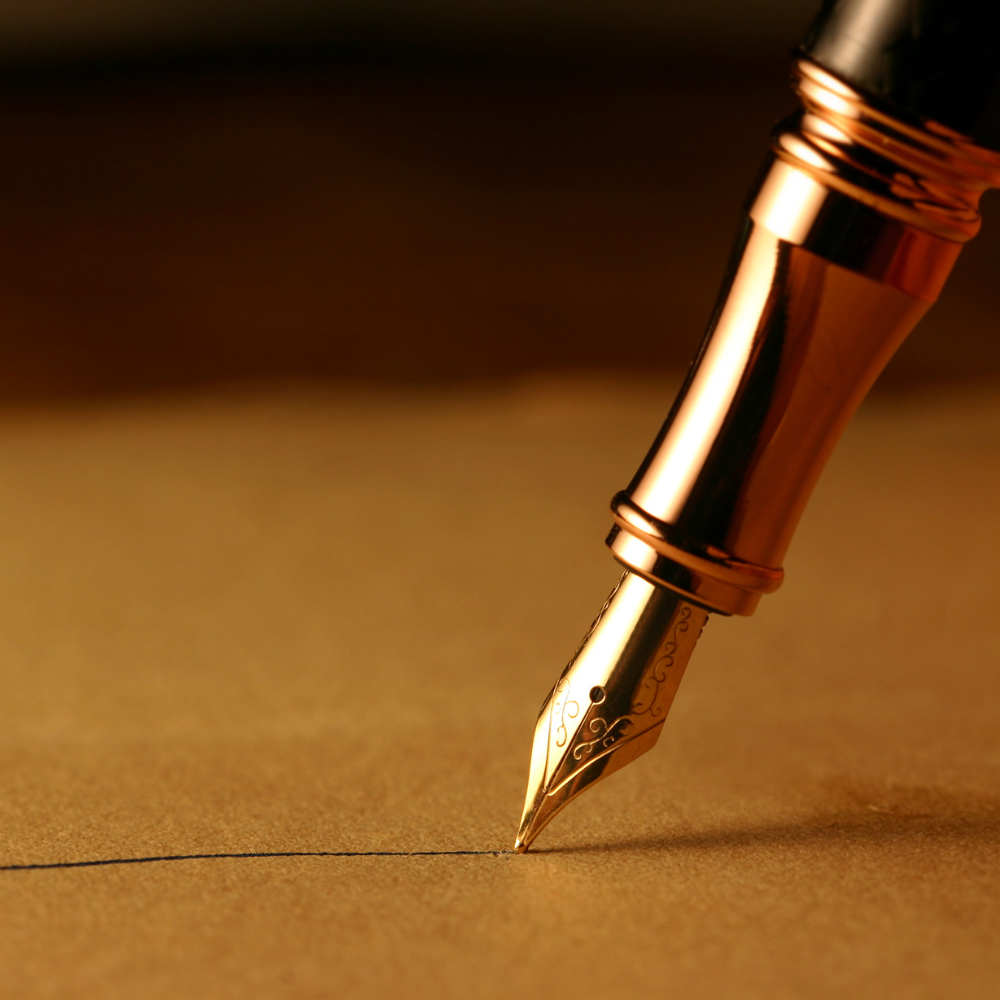
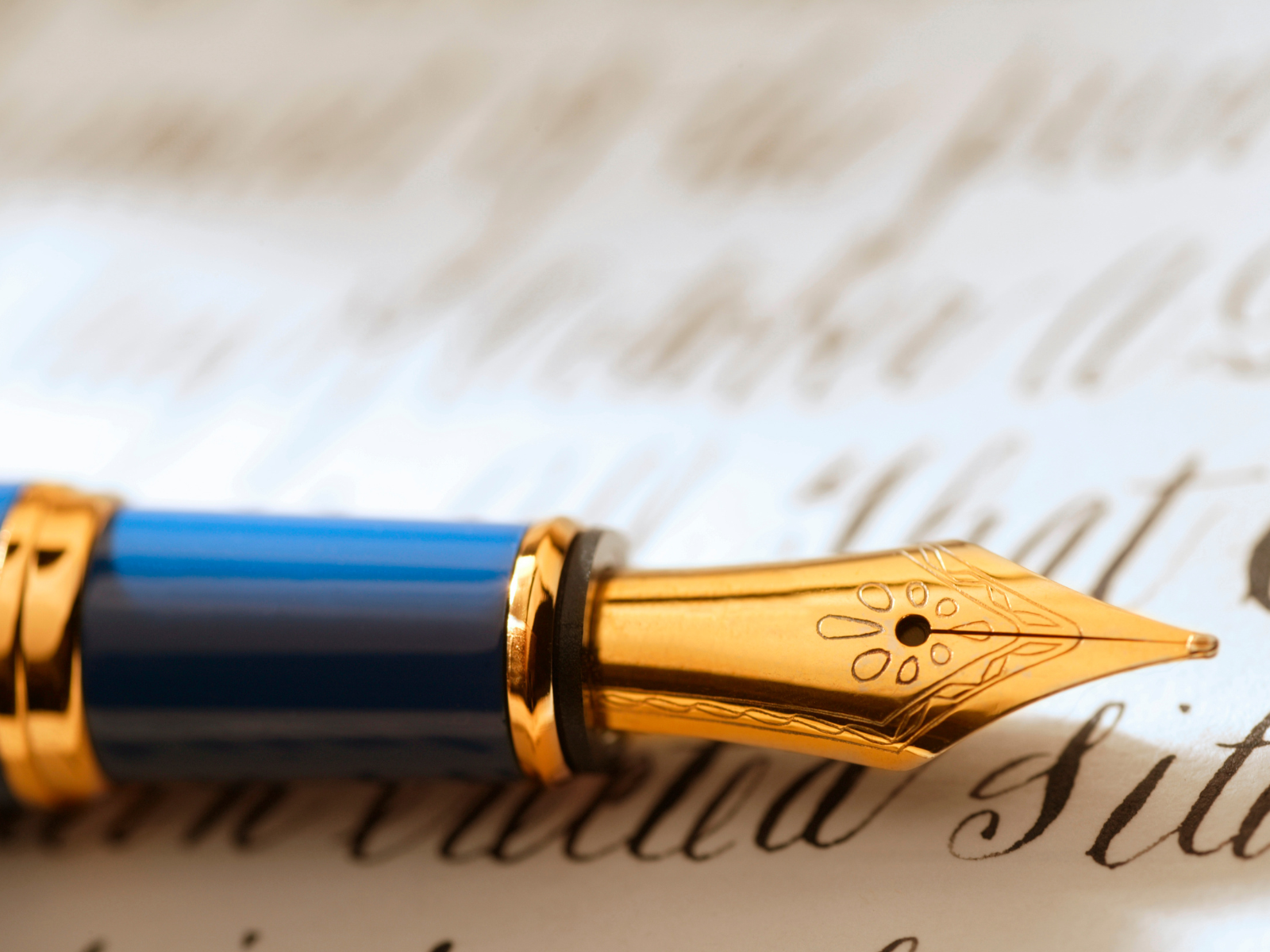
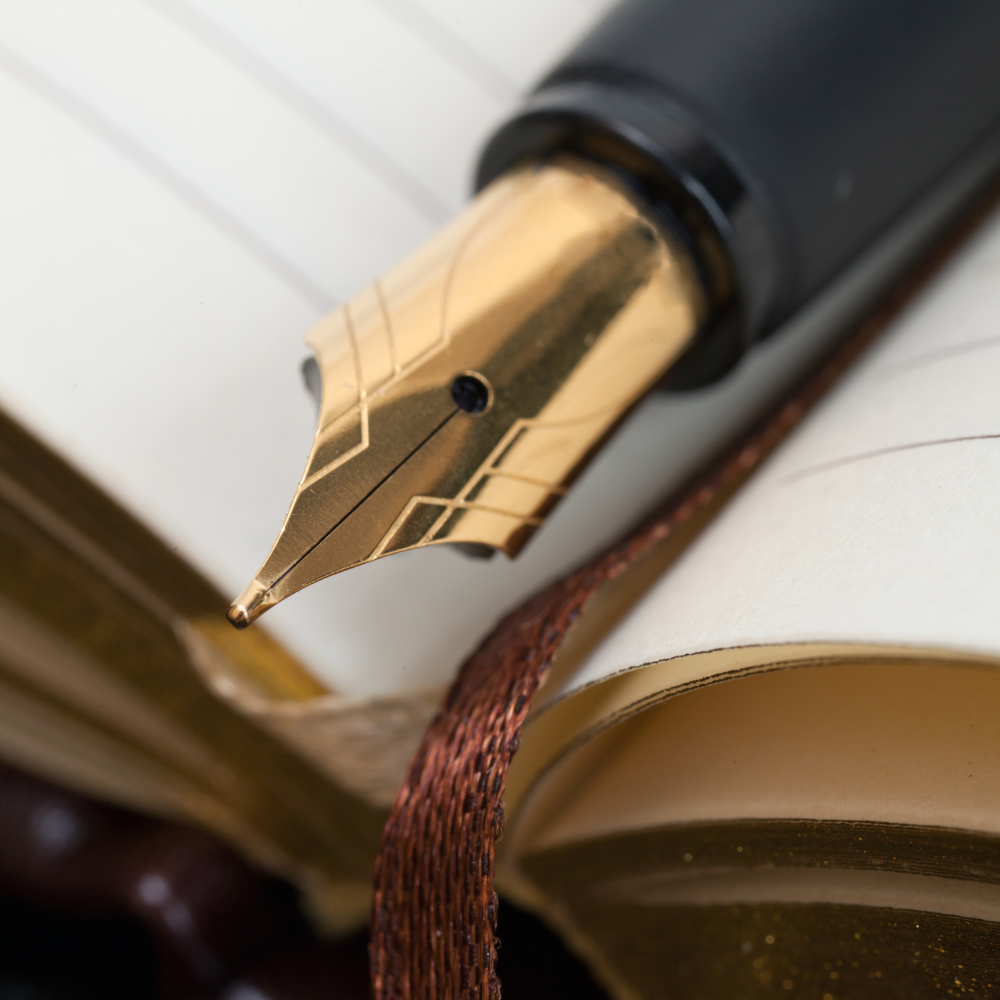
The Versatility of Fountain Pens in Art
Fountain pens, often regarded as the hallmark of classic writing, have been around for centuries.
But beyond their traditional use, these elegant tools have found a place in the artist's toolkit.
When it comes to creating art, the tools you choose can significantly impact your work.
Fountain pens offer a level of versatility that is hard to match.
With a range of nib sizes, from the fine lines produced by an EF nib to the bold strokes of a broad nib, artists can achieve a variety of textures and details.
The flexible nib, in particular, allows for expressive lines that can vary in width with pressure, a feature that flex pens and certain gold nib models are well-known for.
Additionally, the ability to switch between nibs and inks gives artists the option to experiment with different effects and textures within a single piece.
One of the most significant benefits of using fountain pens for art is their unique ink flow.
Unlike traditional ballpoint or gel pens that require pressure to produce ink, fountain pens use capillary action to draw ink onto the paper.
This makes for a smoother and more consistent line, allowing you to focus on your art without worrying about inconsistencies or interruptions in your strokes.

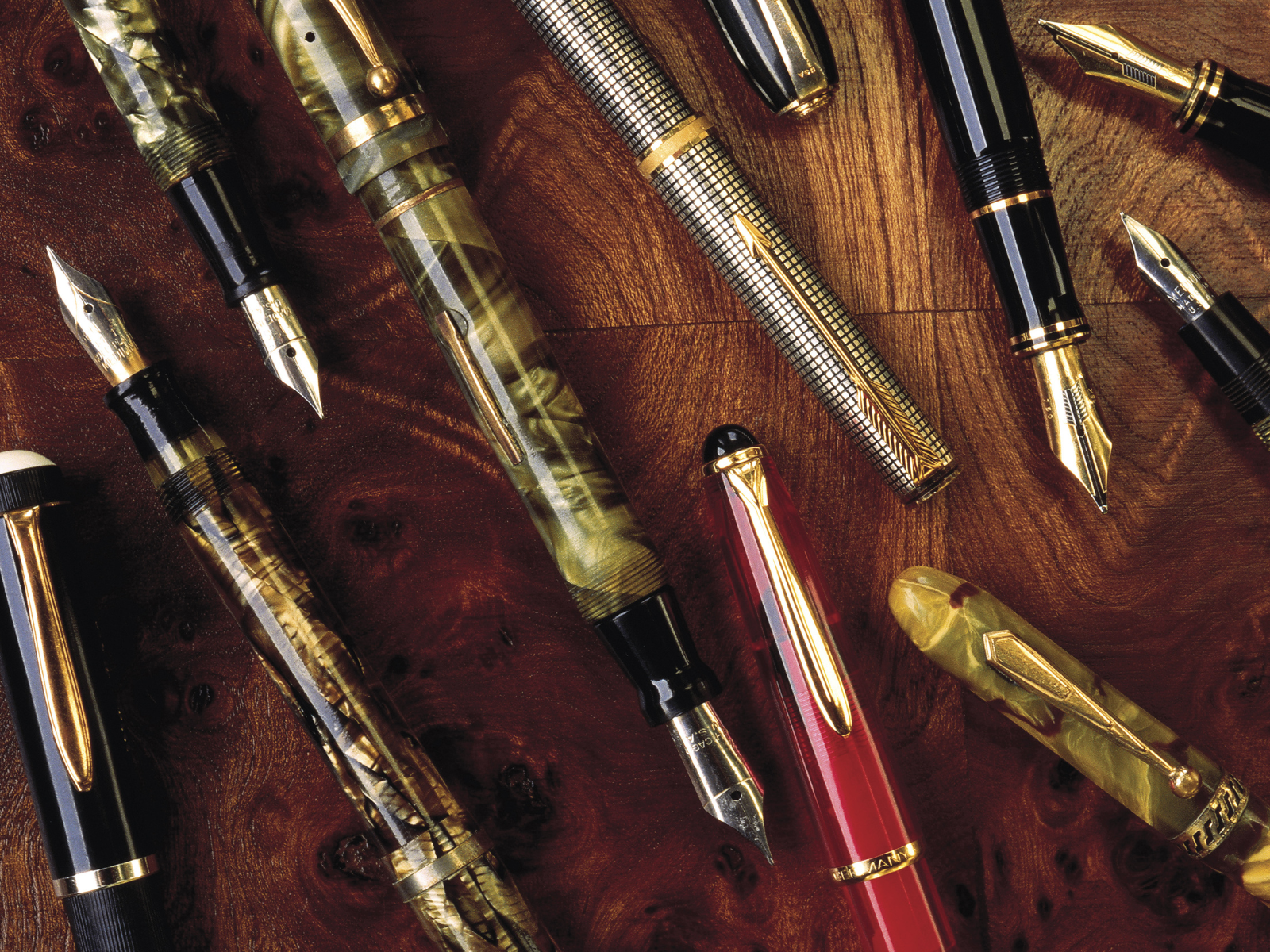

The Spectrum of Fountain Pen Inks
The ink is just as important as the pen itself. Fountain pen inks come in a myriad of colors and properties.
Water soluble ink can create wash effects similar to watercolors, while waterproof inks like Platinum Carbon Ink and De Atramentis Document Ink are perfect for layering without smudging.
The right ink can make all the difference, whether you're looking for the permanence of carbon black ink or the vibrant hues of dye-based inks.
Some inks even have unique properties, such as the shimmering particles found in J. Herbin's 1670 collection of inks or Noodler's invisible ink that appears only under a UV light.
With such a vast range of options at your disposal, you can truly customize and elevate your art with fountain pen inks.
Nib Size and Ink Flow: Crafting the Perfect Line
The nib size of a fountain pen determines the thickness of the lines it produces.
Artists can choose from extra fine nibs for intricate details to medium nibs for more substantial lines.
The ink flows smoothly from a well-maintained fountain pen, allowing for continuous lines without the need for constant redipping, unlike dip pens or technical pens.
For artists who prefer to work in layers, fountain pens also offer the option of using different nib sizes for each layer, creating a textured effect.
This is especially useful when paired with ink that has varying properties, such as a waterproof and water soluble ink combination.

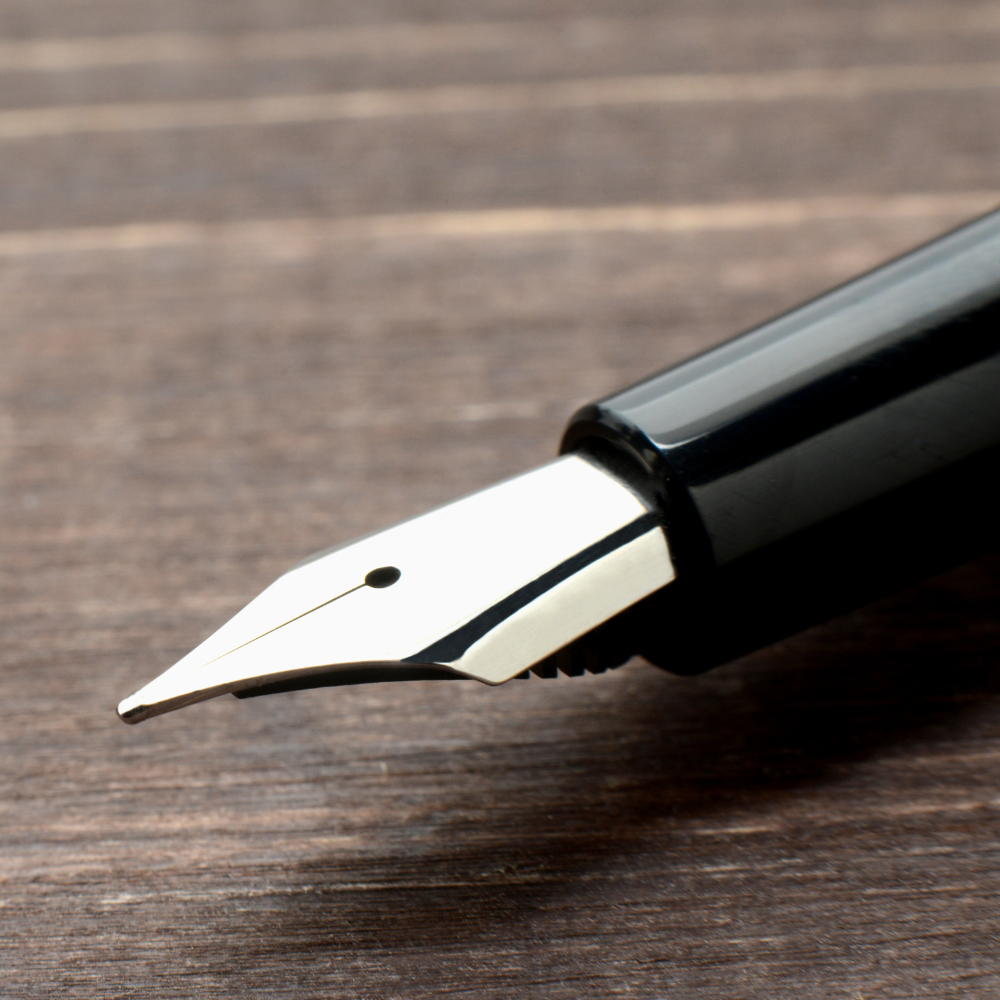
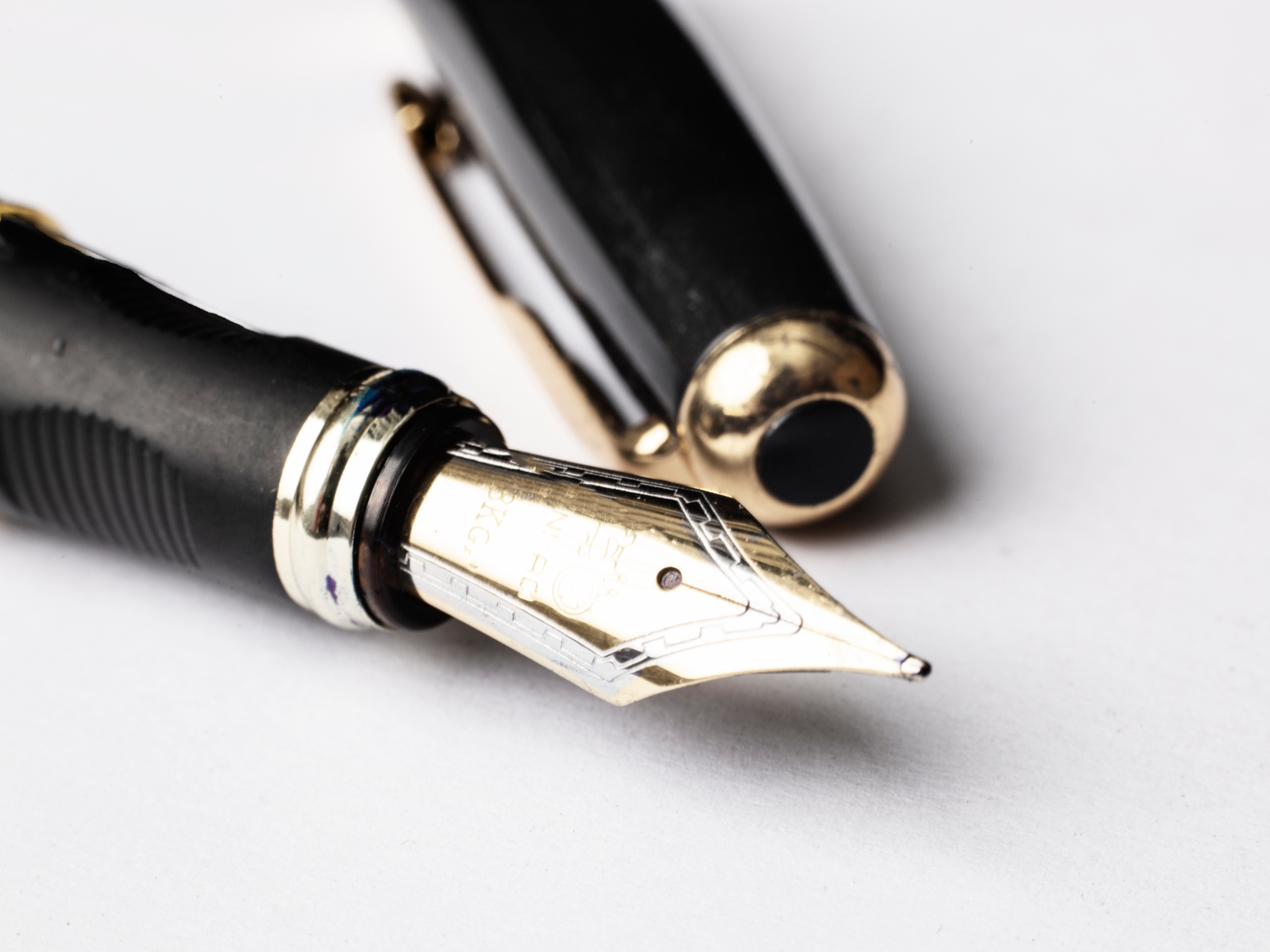
The Art of Choosing the Best Fountain Pens
Selecting the best fountain pens for art is a personal choice that depends on your drawing style and preferences.
Brands like Lamy Pens, Pilot Pen, and Goulet Pens offer a range of options that cater to artists.
The Lamy Safari, for example, is known for its durability and comfort, making it a popular choice for those who spend long hours drawing.
On the other hand, Pilot's Vanishing Point fountain pen has a retractable nib, making it perfect for travel and on-the-go sketching.
When choosing a fountain pen for art, keep in mind factors such as the type of nib, ink compatibility, and ergonomics.
Fountain Pens for Sketching: A Portable Studio
Fountain pens are a favorite among artists who enjoy sketching outdoors or on the go.
Unlike a heavier pen or a set of brush pens, a fountain pen is the only pen you need to carry.
Its portability, combined with the ability to use different inks, makes it an ideal choice for capturing scenes and moments quickly and with great detail.
Moreover, artists can also use a fountain pen to create preliminary sketches that they can later transfer onto a canvas or larger work.
The Role of Paper in Fountain Pen Art
The surface you choose to work on can greatly affect the outcome of your art.
Smooth paper is best for fountain pens as it allows for even ink lines and reduces the risk of feathering.
However, some artists prefer a bit of texture for added character in their work.
Regardless, it's important to use paper that can handle the ink without bleeding or buckling.
The Impact of Fountain Pen Use on Drawing Techniques
Using a fountain pen can affect an artist's drawing technique.
The need to control the pressure applied to a flexible nib, for instance, can lead to a more deliberate and mindful approach to line-making.
This can result in a drawing style that is both fluid and precise, with the ability to convey a range of emotions and atmospheres through ink lines alone.
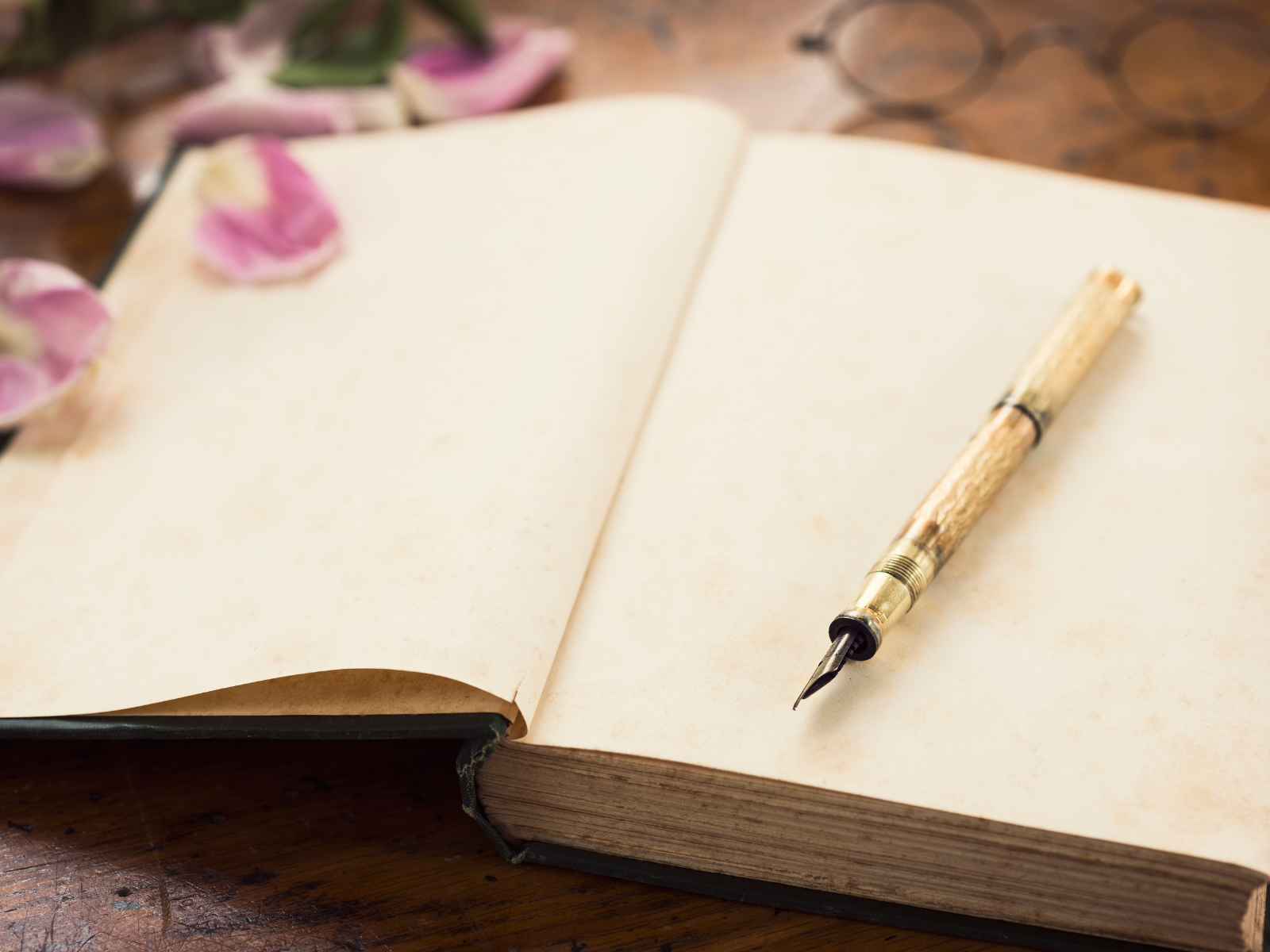
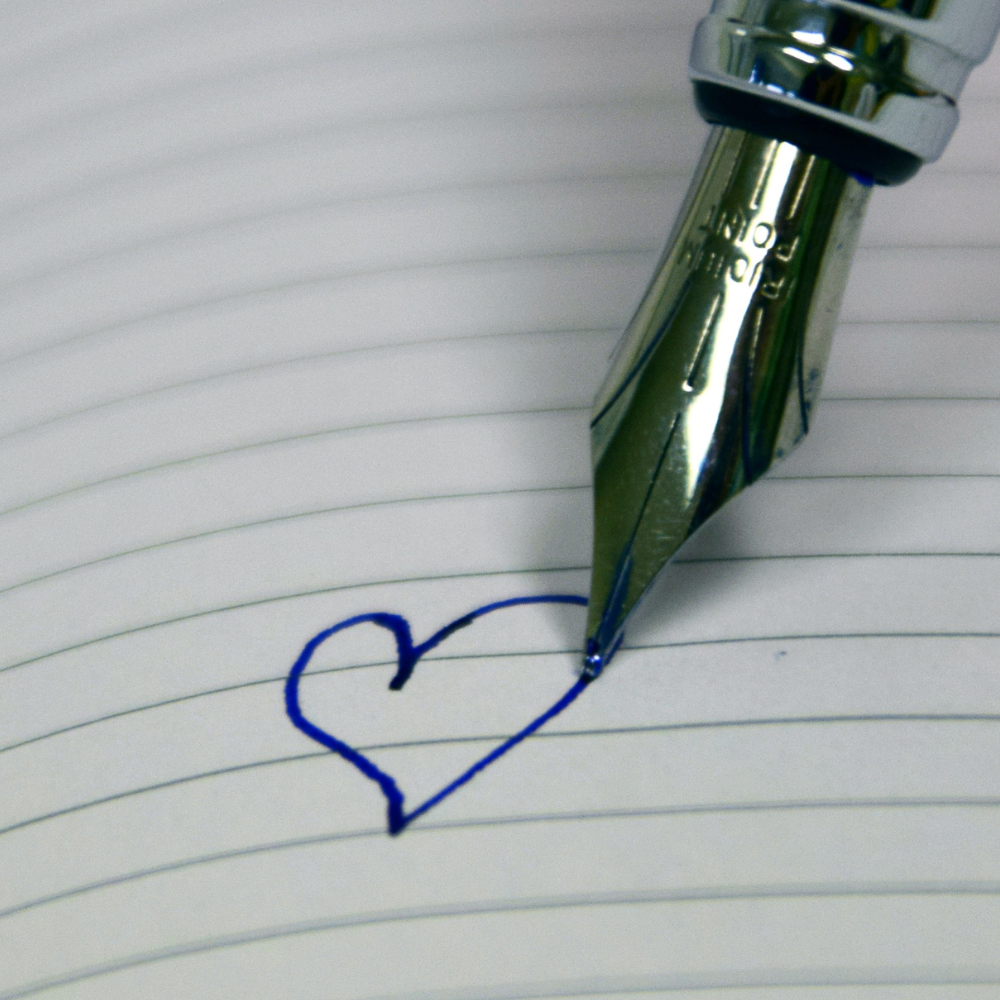
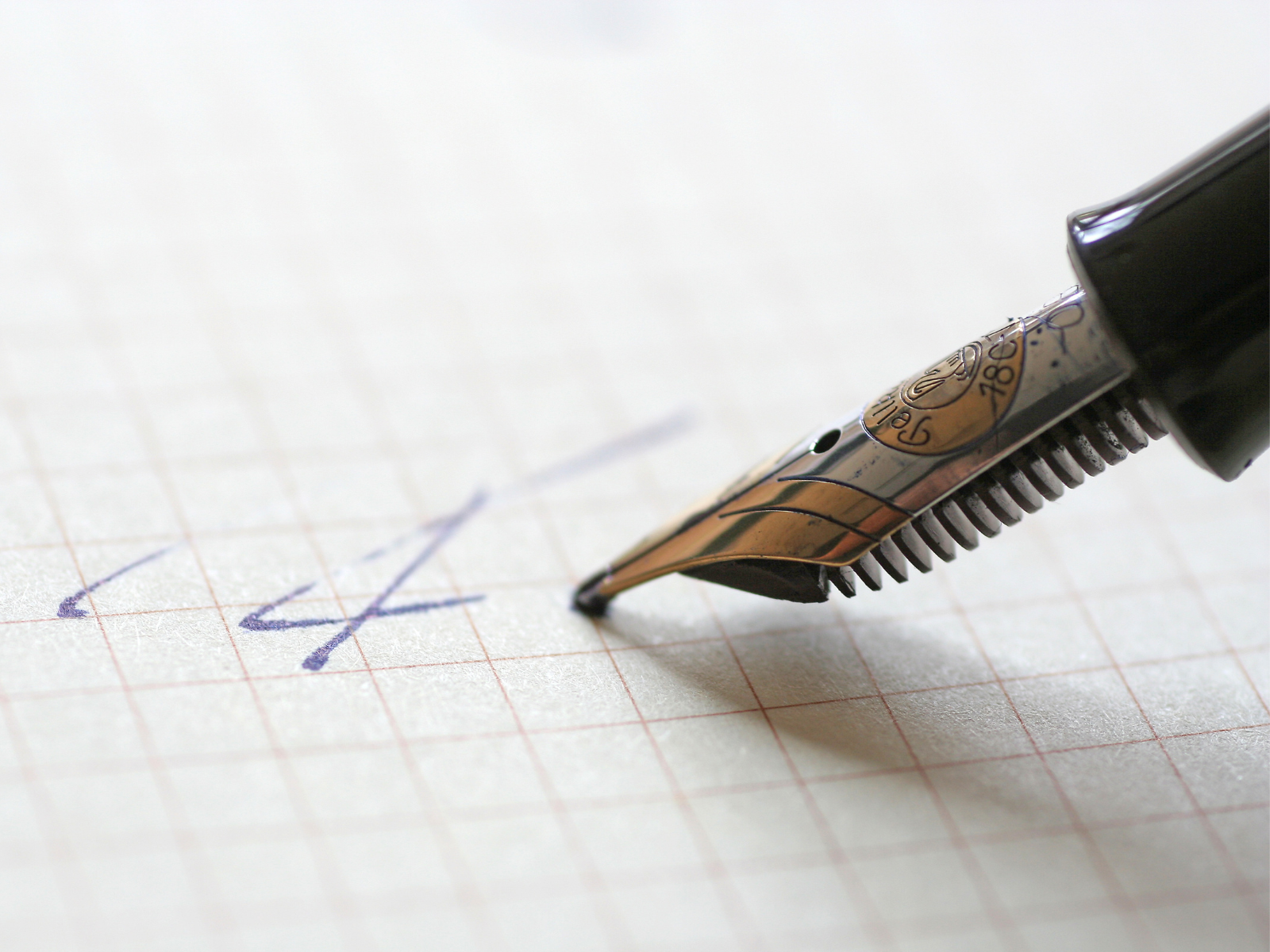
The Expressive Potential of Calligraphy Nibs
Calligraphy nibs are not just for writing; they are also powerful tools for art.
Their design allows for thick and thin lines within a single stroke, adding dynamism and flair to artwork.
Whether it's for adding fine details or creating bold brush marks, a calligraphy nib can be a game-changer for artists looking to add a new dimension to their work.
The Precision of Extra Fine Nibs for Detailed Artwork
Extra fine nibs are the unsung heroes for artists who revel in the creation of intricate details and precise lines.
The ability to produce a finer line than medium nibs or even some technical pens makes them a coveted choice for illustrators and draftsmen.
When paired with waterproof ink or permanent ink, these nibs ensure that each stroke remains unblemished by moisture or time, allowing for artworks that stand the test of durability.
The precision of extra fine nibs is not only functional but also a testament to the artist's skill in controlling such a delicate instrument.
In the realm of fountain pens, extra fine nibs are often compared to the thin line capabilities of a technical pen or the controlled strokes of a brush pen.
However, unlike a ballpoint pen that may skip or a dip pen that requires constant re-inking, a fountain pen with an extra fine nib offers a consistent flow of ink, such as dye based inks or india ink, without the interruption.
This consistency is crucial for artists who demand uninterrupted lines to convey their vision.
Moreover, brands like Pelikan nibs have perfected the craft, offering some of the best fountain pen options for artists seeking the sharpness of an extra fine nib.
The Advantages of Medium Nibs for Artists
Medium nibs strike a balance between fine and broad nibs, making them a versatile choice for artists who enjoy both writing and drawing.
With a medium nib, the artist can achieve a variety of line widths by simply adjusting the pressure applied during use.
This flexibility allows for a seamless transition between bold strokes and delicate details, which is essential for creating dynamic artwork.
The medium nib is particularly well-suited for artists who prefer a more traditional line weight in their drawings, as it provides a classic look that is neither too thick nor too thin.
Furthermore, medium nibs are forgiving for those who are new to using fountain pens in their art.
They are less likely to catch on the paper's texture than finer nibs, which can be a common frustration for beginners.
Medium nibs also tend to be more robust and can handle a wider range of inks, including some of the more viscous varieties that might clog a finer nib.
This makes them an excellent choice for artists who like to experiment with different ink types, such as the highly saturated colors offered by brands like Noodler's pens.
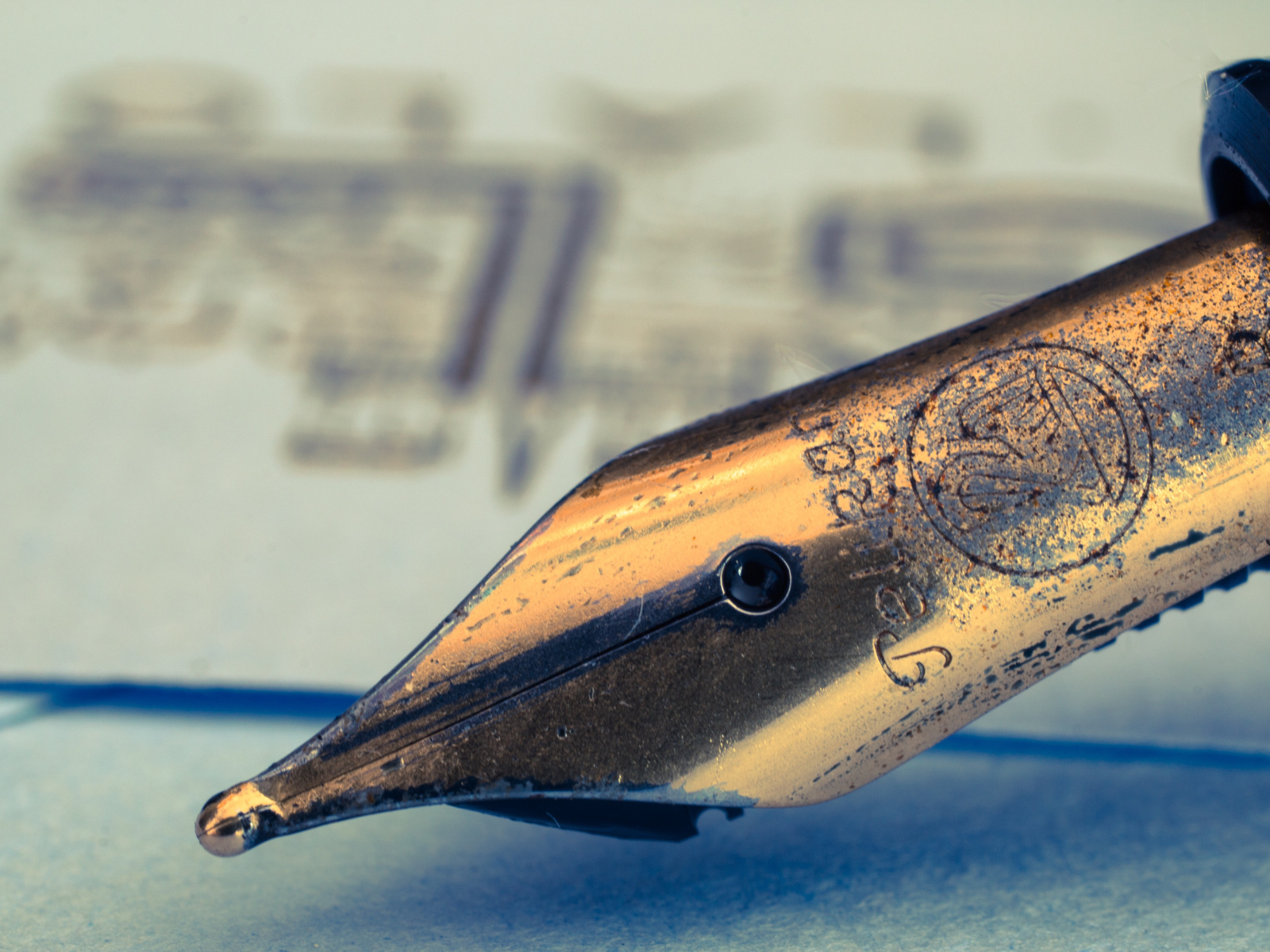

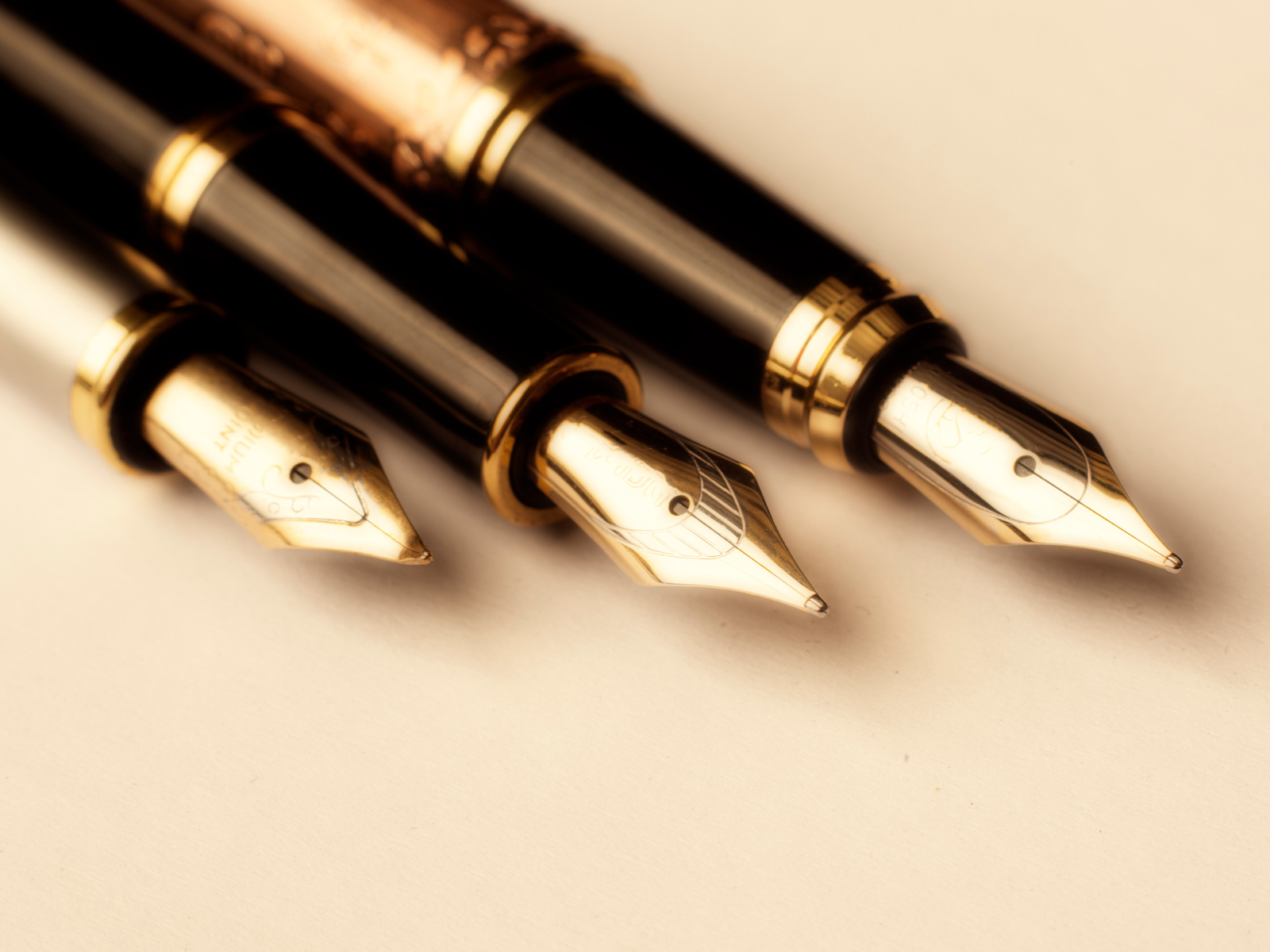
Influence of Ink on Creative Expression
The properties of fountain pen inks, such as whether they are water-resistant or how quickly they dry, can greatly influence artistic expression.
Waterproof inks allow for layering without the risk of smudging, while water-soluble inks can be manipulated to create washes and gradients.
The choice of ink can open up new possibilities for artists to explore in their work.
Exploring the Diversity of Inks: From Blue Ink to India Ink
The choice of ink plays a pivotal role in the artistic process, with options ranging from the classic elegance of blue ink to the rich depth of India Ink.
Blue ink, often found in ink cartridges, is a favorite for its vibrant hue and its ability to make pencil lines pop in a sketch.
It's a versatile color that can add a touch of personality to any piece without overwhelming the senses.
On the other hand, India Ink is renowned for its opacity and permanence, making it a go-to for artists who require waterproof ink for their creations.
Dye based inks offer a spectrum of colors and shades, allowing artists to experiment with a variety of tones and effects.
However, when permanence is key, many artists turn to Noodler's pens, which are designed to work with a range of permanent inks.
These inks are resistant to water, smudging, and fading, ensuring that the artwork remains pristine over time.
Whether using an expensive pen or a more affordable model, the combination of a reliable fountain pen with high-quality ink can elevate the art form to new heights.
The use of a permanent ink like india ink not only secures the artwork's longevity but also challenges the artist to commit to each stroke with confidence and intent.
Ink Cartridges vs. Bottled Ink: Convenience or Customization?
While ink cartridges offer convenience and ease of use, bottled ink provides a wider range of colors and the ability to mix custom shades.
An ink bottle also tends to be more economical in the long run, especially for artists who use their pen regularly.
However, for those who value the ease of swapping ink colors quickly, cartridges might be the preferred choice.
Ultimately, the decision between cartridges and bottled ink comes down to personal preference and how you plan to use your fountain pen for art.
The Role of Ink Cartridges in Artistic Flexibility
Ink cartridges are a convenient option for artists on the go, providing a mess-free and easy-to-replace ink source for fountain pens.
They are particularly useful for artists who travel or prefer to sketch outside of the studio, as they eliminate the need for carrying bottles of ink.
The use of ink cartridges also allows for quick color changes, which is beneficial when working on multi-colored pieces or when a sudden burst of inspiration demands a different hue.
This convenience does not come at the cost of quality, as many high-grade inks are available in cartridge form.
However, it's important to note that while an ink cartridge offers convenience, they may limit the range of inks available to the artist.
Some fountain pen enthusiasts, including those who use Noodler's pens, prefer bottled ink for its vast selection of colors and properties.
Bottled inks can be mixed to create custom shades, providing an additional layer of creativity to the artistic process.
For those who value this customization but still want the convenience of cartridges, refillable ink cartridges are a viable solution, bridging the gap between convenience and customization.
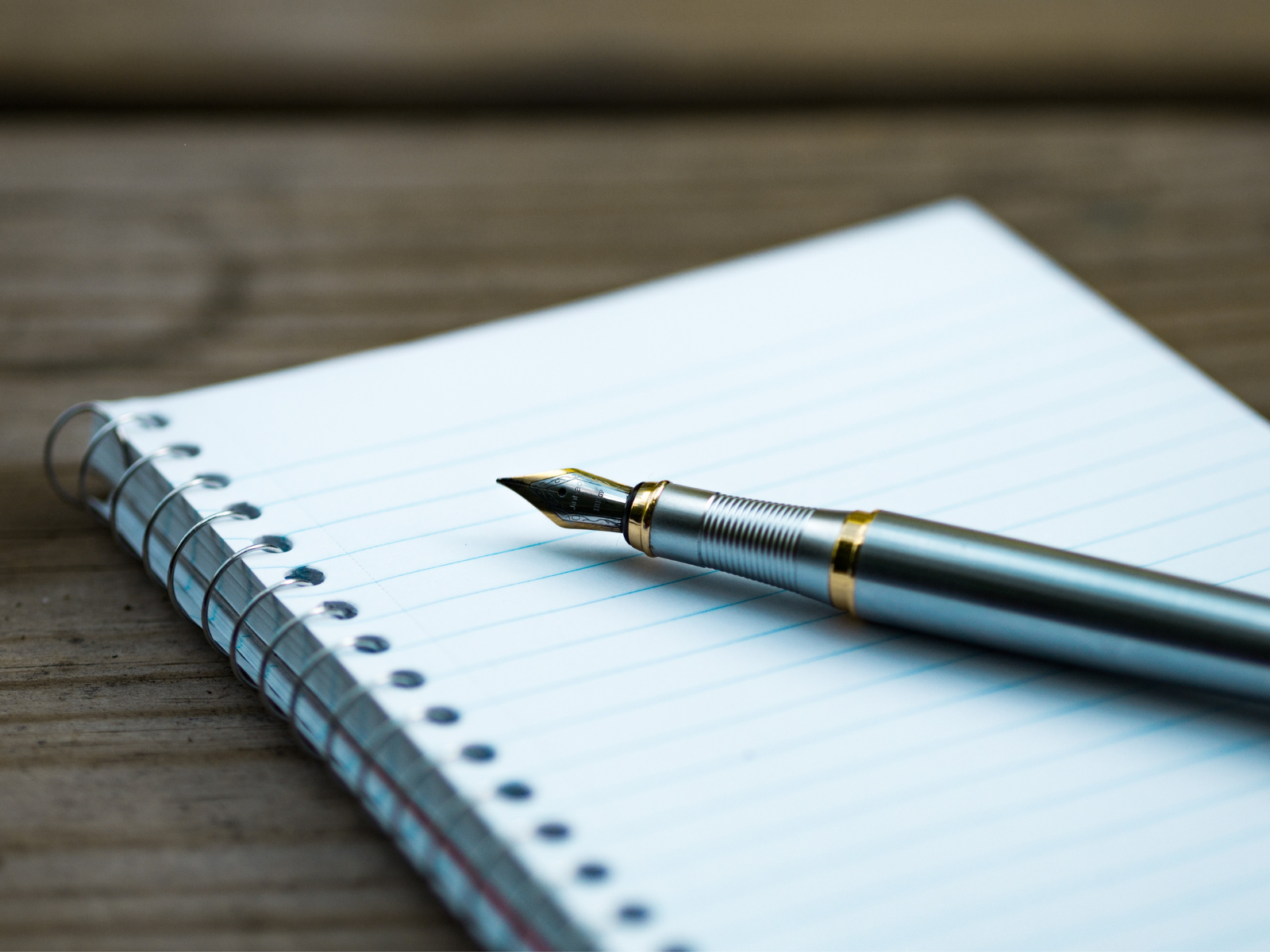
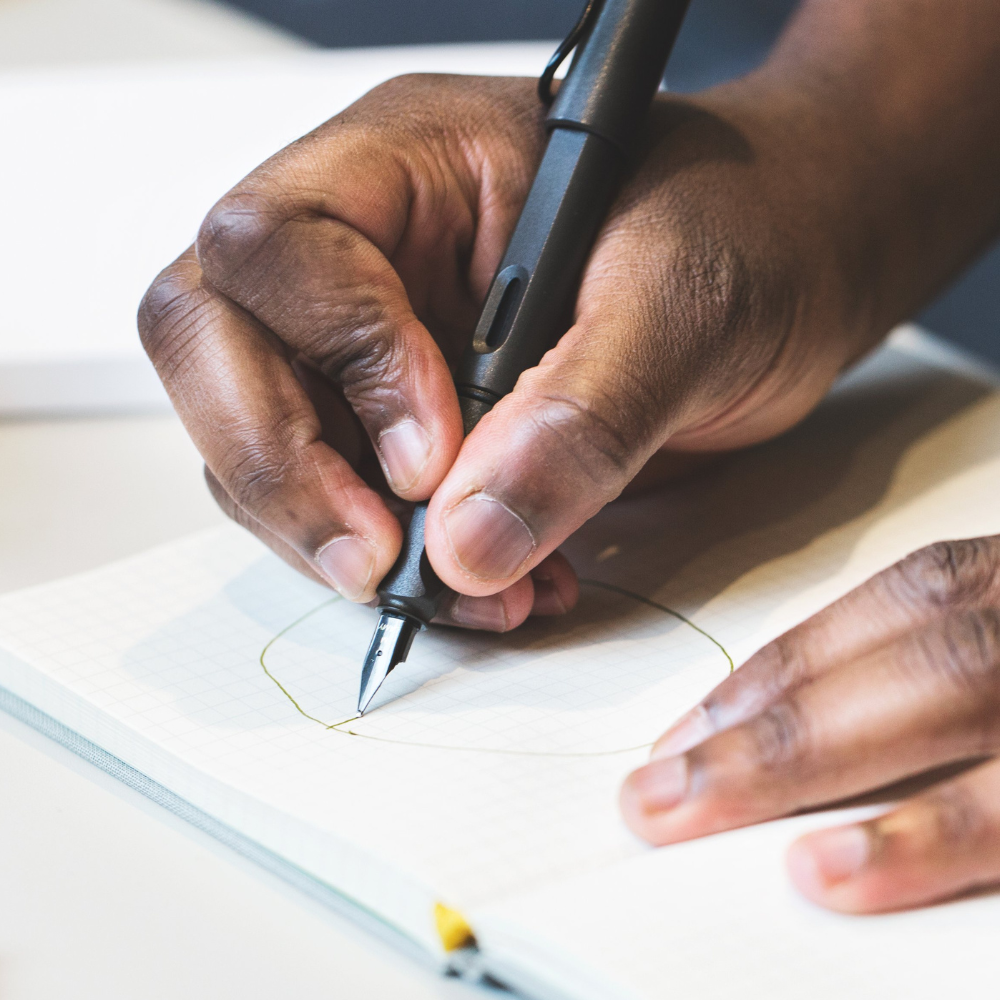
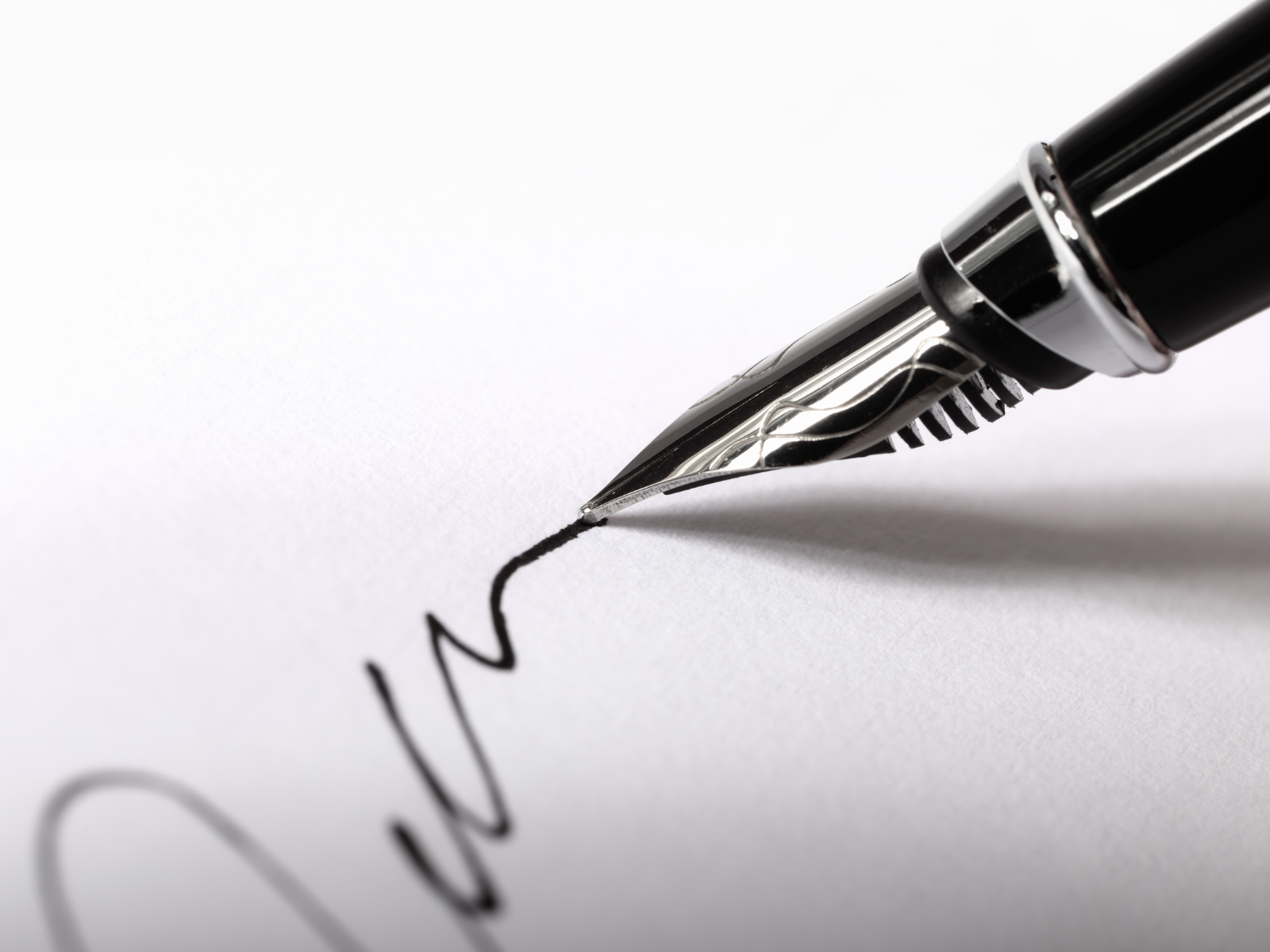
Maintenance: Keeping Fountain Pens Art-Ready
Regular maintenance is crucial for keeping a fountain pen in top condition.
To make the most out of your fountain pen for art, it's essential to understand its mechanics and how to properly maintain it.
Fountain pens require regular cleaning and flushing to prevent ink clogs and to maintain ink flow.
Cleaning the nib and feed to remove excess ink, using a paper towel to blot any ink flowing too freely, and ensuring the pen is stored properly will extend its life and performance.
A well-maintained fountain pen is an artist's ally, always ready to produce the finest lines or the most fluid strokes.
Additionally, storing the pen properly can also prevent damage and extend its lifespan.
Comparing Fountain Pens with Other Art Pens
When stacked against other pens like ballpoint pens, brush pens, or most fine liners, fountain pens stand out for their unique properties.
The ink color, the weight of the pen, and the tactile experience of using a fountain pen differ significantly from using a ballpoint or a heavier pen.
Each type of pen has its place in art, but fountain pens offer a distinct combination of control and fluidity.
For artists who value both precision and expression in their work, a fountain pen is an invaluable tool.
The Environmental and Economic Benefits of Fountain Pens
In an age where sustainability is key, fountain pens offer an eco-friendly alternative to disposable pens.
The longevity of a good quality fountain pen, coupled with the ability to refill it from an ink bottle, means less waste and a lower environmental impact.
Additionally, over time, investing in a fountain pen can be more economical than buying disposable pens repeatedly.
For artists who rely heavily on their pens for their livelihood, a durable fountain pen is not just an environmentally friendly choice but also a practical one.

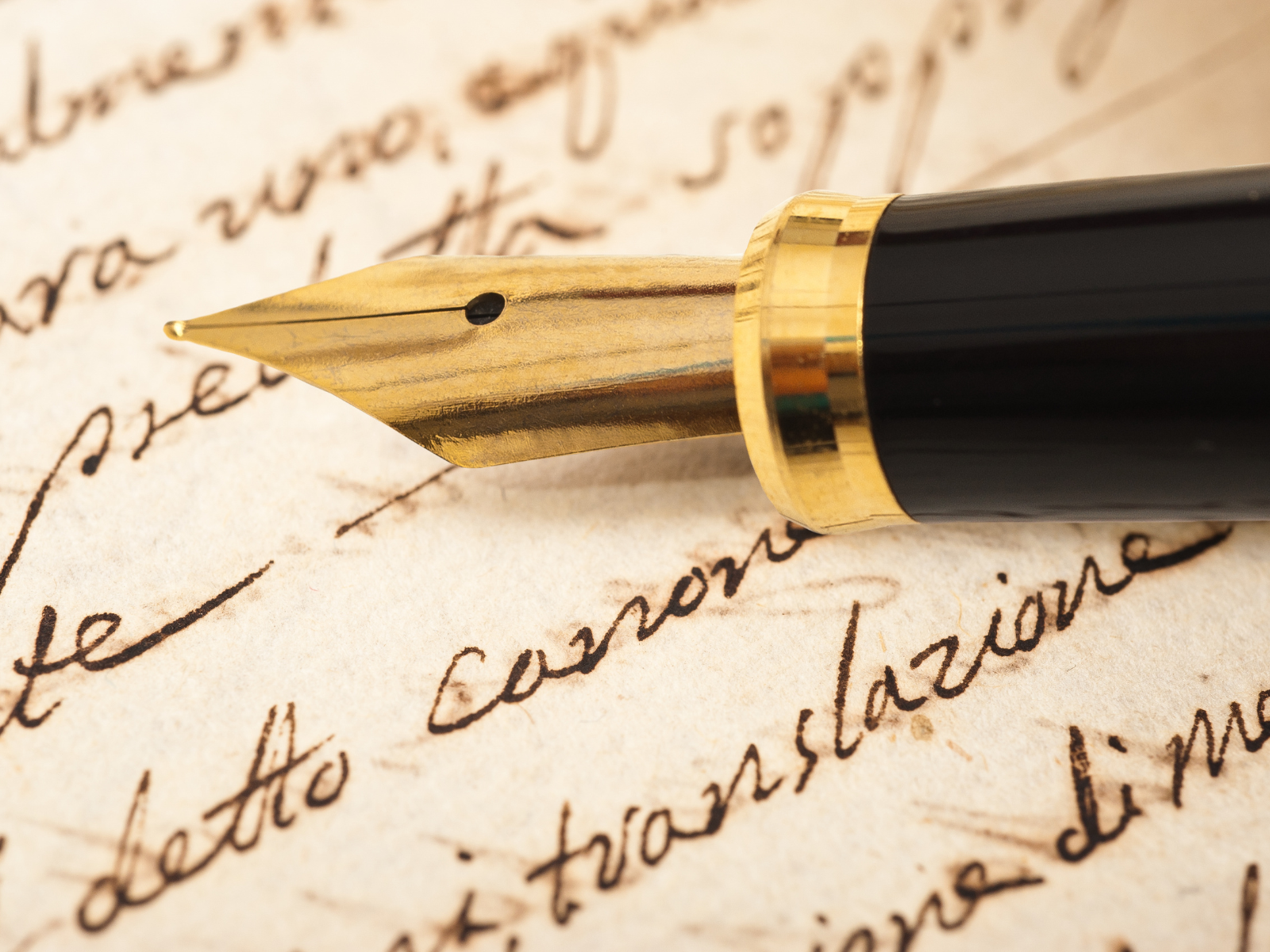

Evolution of Noodler's Pens
Noodler's pens have carved a niche in the world of art due to their exceptional quality and the variety of inks they offer.
Artists often praise these pens for their reliability and the ability to use a wide range of ink cartridges or bottled inks, which provides flexibility in color choice and ink properties.
The brand is known for its commitment to creating pens that cater to the needs of artists who demand precision and longevity from their tools.
Noodler's fountain pens are particularly favored for their affordability without compromising on performance, making them accessible to both amateur and professional artists.
The company's dedication to innovation is evident in their continuous efforts to improve ink formulas and pen designs.
Noodler's pens are often recommended for those who wish to explore the dynamic relationship between the pen and the artist's hand.
With a Noodler's pen, artists can achieve a variety of line weights and textures, thanks to the diverse nib sizes available.
The pens are also celebrated for their eco-friendly approach, as they are designed to last a lifetime, reducing the need for disposable pen purchases and contributing to a more sustainable art practice.
Noodler's pens have become a staple in the artistic community, not only for their rich inks but to draw crisp, non-bleeding lines that can be seamlessly integrated into watercolor paintings.
This unique feature opens up a realm of possibilities for mixed-media artwork, where the precision of Noodler's pens can coexist with the fluidity of watercolors.
Noodler's pens are renowned for their exceptional shading capabilities, which allow artists to create depth and dimension in their work.
The unique formulation of Noodler's inks interacts with the paper to produce a range of tones from a single stroke, depending on the pressure and angle of the nib.
The design and ergonomics of a pen are crucial for artists who spend hours perfecting their craft. Noodler's pens are renowned for their comfortable grip and balanced weight, which facilitate prolonged art sessions without causing hand fatigue.
The thoughtful construction of these pens allows artists to maintain a steady hand, ensuring precision in every stroke.
Whether sketching intricate details or filling larger areas with ink, the ergonomic features of Noodler's pens make them a favored choice among professionals and hobbyists alike.
In the realm of mixed media art, Noodler's pens have carved out a niche as a versatile and indispensable tool.
Their compatibility with various art mediums makes them a favorite among artists who love to experiment and push the boundaries of traditional art forms.
Whether it's combining ink drawings with acrylic paints or layering pen work over collages, Noodler's pens maintain their integrity, providing crisp lines that stand out against a multitude of textures and colors.
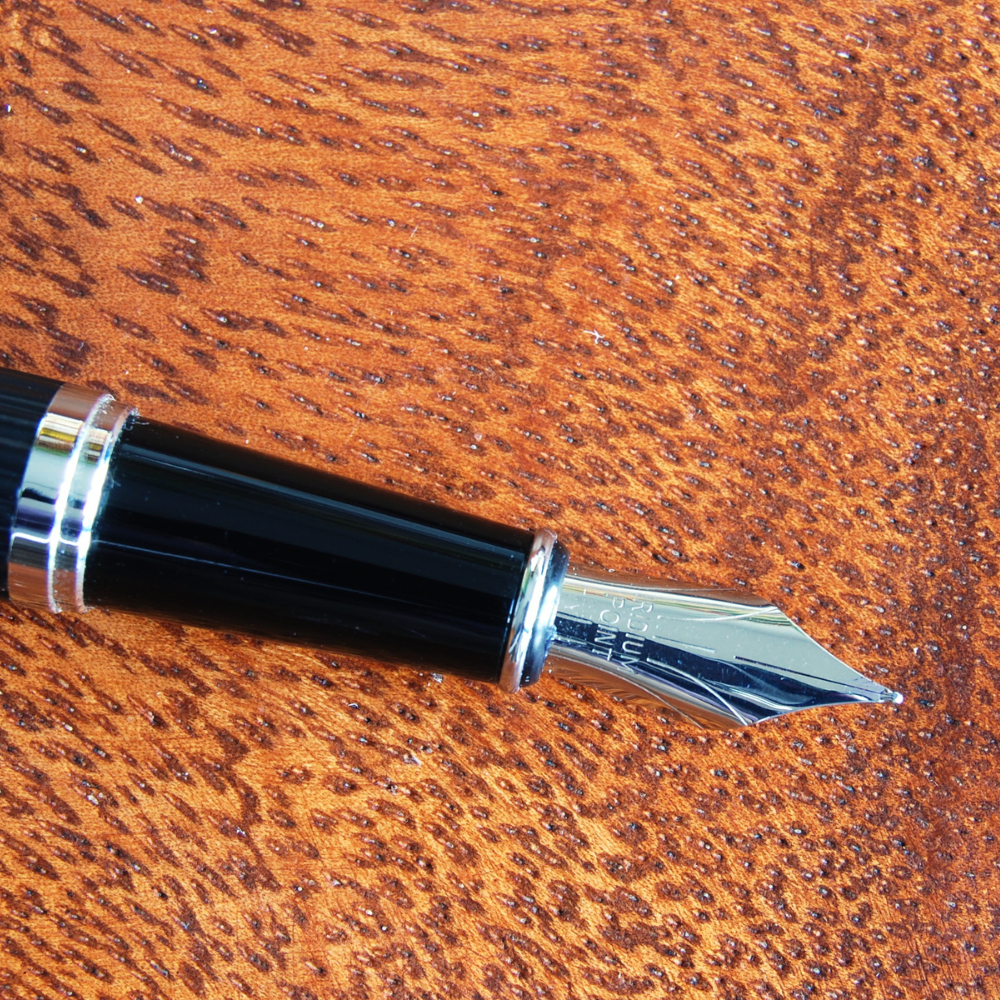

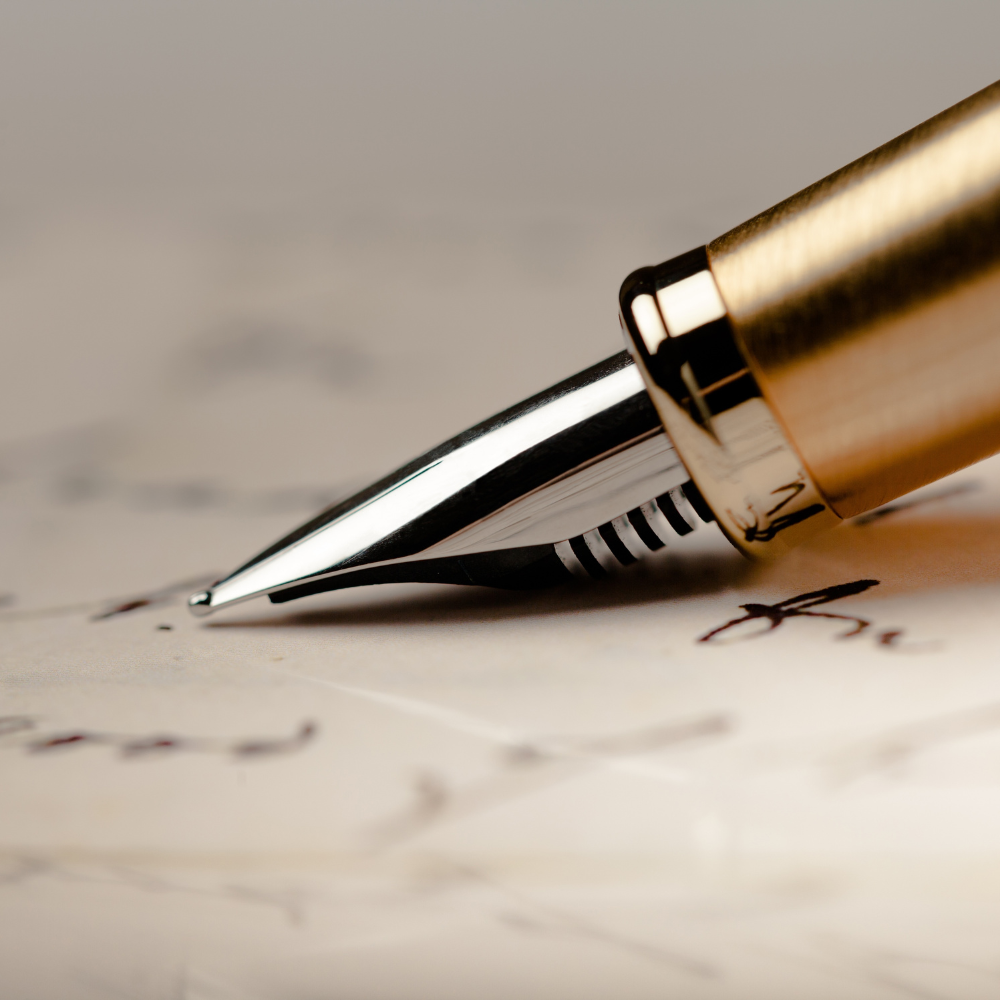
Noodler's Pens and the Art of Illustration
Illustrators often seek tools that can keep pace with their imagination and provide the precision necessary for detailed work.
Noodler's pens have become a staple for many illustrators due to their reliable ink flow and the variety of nib sizes available.
The fine nibs are perfect for intricate line work, while the broader options can fill larger areas with ease, making them ideal for everything from character design to elaborate architectural renderings.
The pens' consistent performance ensures that illustrators can focus on their creative process without worrying about ink blotches or uneven lines.
In the realm of illustration, graphic novels, and concept art, the use of Noodler's pens is particularly prevalent.
The pens' ability to produce clean, crisp lines that scan and reproduce well makes them a favorite among professionals who need their work to translate seamlessly into print.
Additionally, the waterproof and archival qualities of many Noodler's inks mean that original illustrations will stand the test of time, preserving the artist's legacy and ensuring that their work can be enjoyed by future generations.
The longevity of an artwork is a critical consideration for artists, and Noodler's pens contribute significantly to the preservation of fine art pieces.
Noodler's inks are known for their archival quality, which means they are resistant to fading and deterioration over time.
This is particularly important for artists who sell their work or display it in galleries, as it ensures that the vibrancy and clarity of their lines remain intact for years to come.
The bulletproof and eternal lines produced by Noodler's pens withstand exposure to light and environmental factors, making them a reliable choice for artists who are concerned with the longevity of their creations.
Significance of Fountain Pens in the Art World
Fountain pens have a rich history, not only in writing but also in art.
Many famous artists have used fountain pens to sketch, draft, and even complete final pieces.
This historical context adds a layer of depth and tradition to the use of fountain pens in art today, connecting modern artists with a lineage of creatives who have appreciated the pen's unique qualities.
As digital art becomes increasingly prevalent, the role of traditional tools like fountain pens may seem uncertain.
However, the tactile experience and the distinct results that fountain pens offer ensure their continued relevance in the art world.
Artists who value the connection between hand and paper will likely keep fountain pens as a staple in their artistic practice.
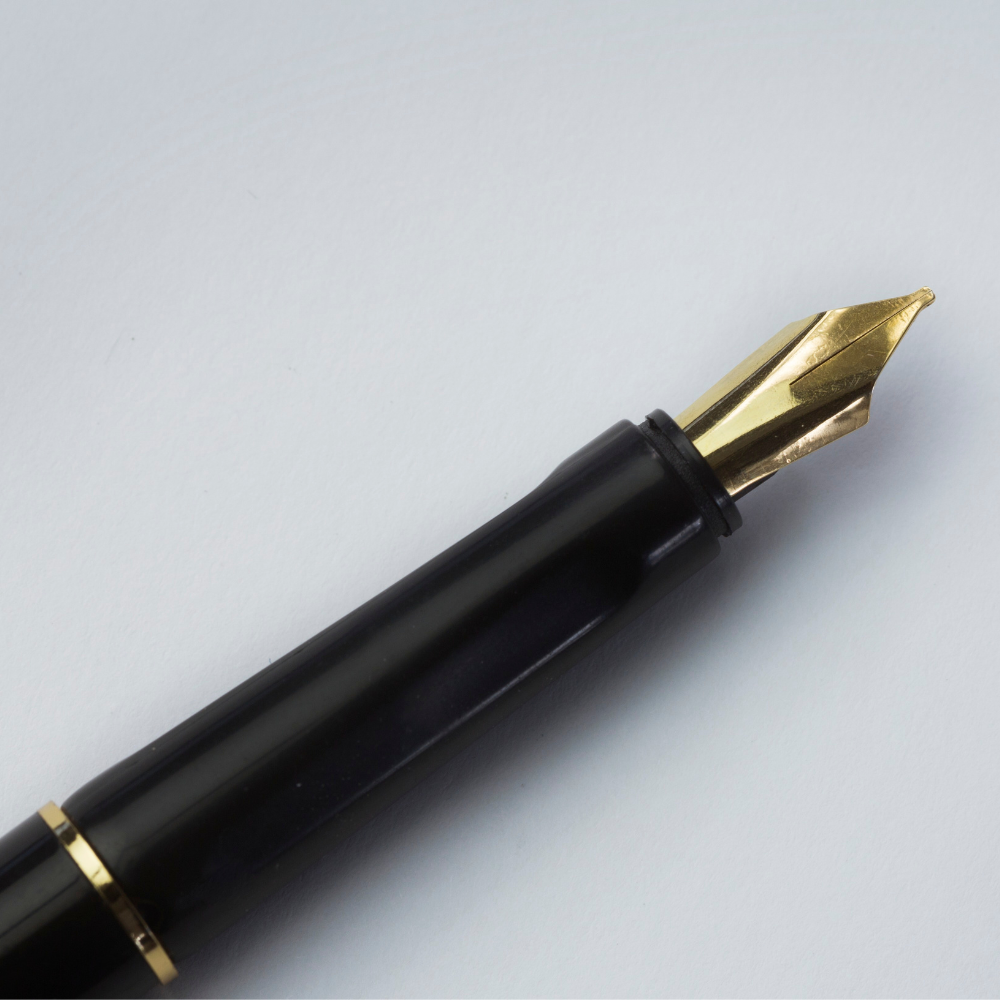
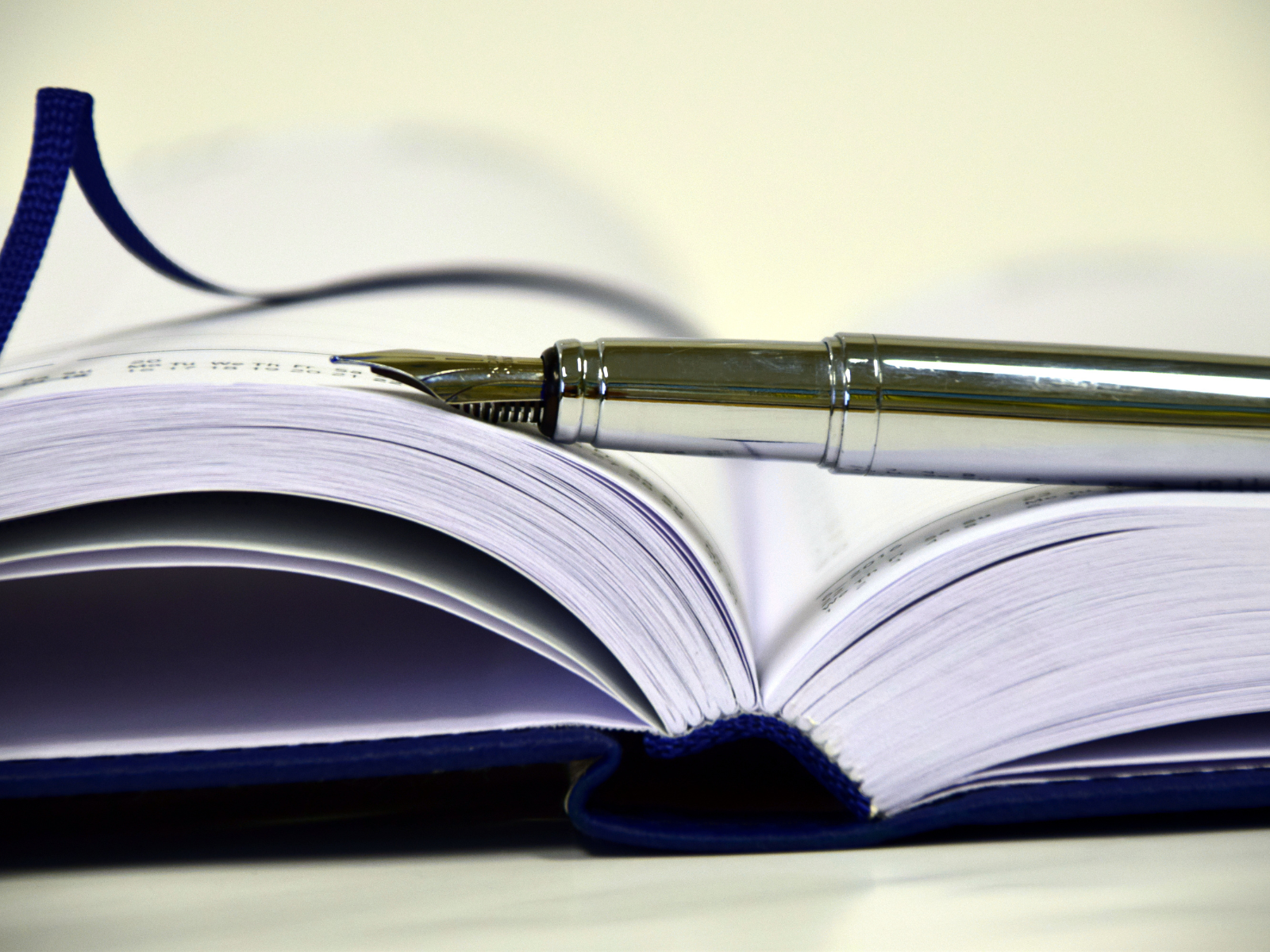
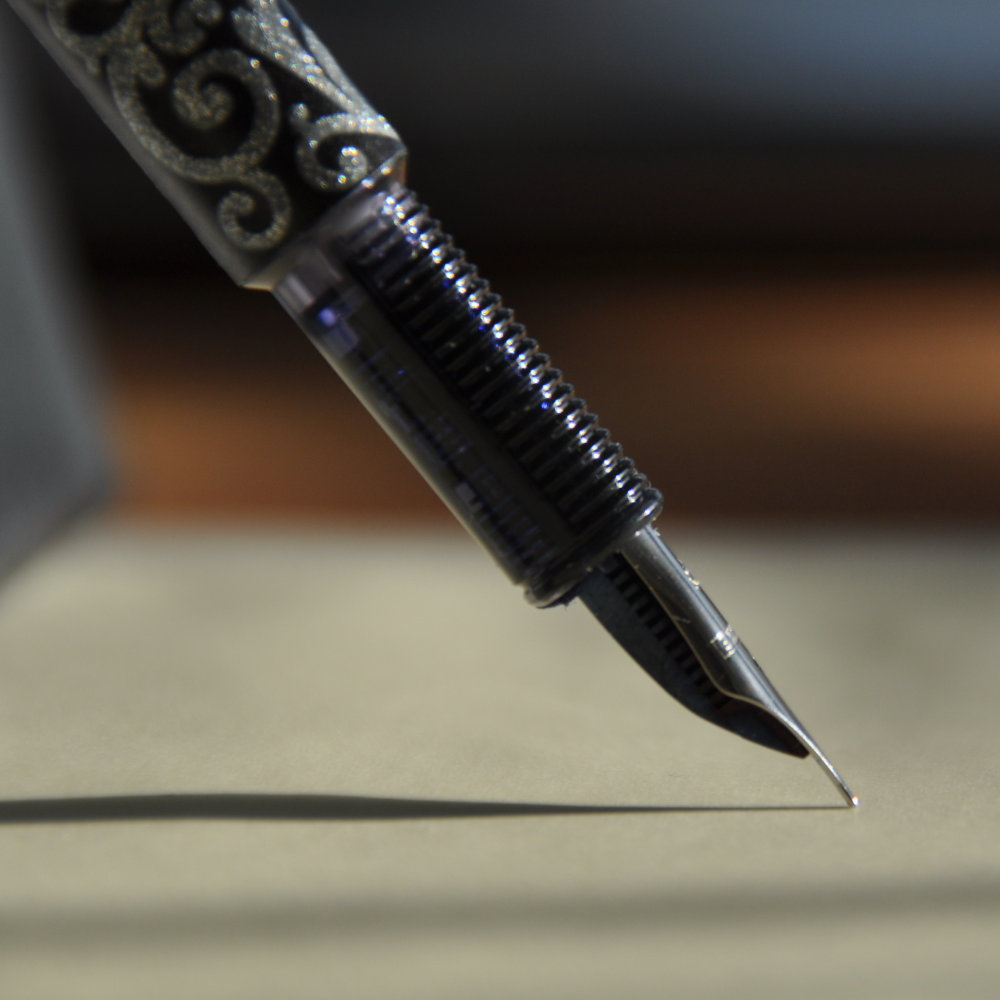
Why Artists Love Fountain Pens
There are many reasons why artists continue to choose fountain pens over other art pens.
For some, it's the variety of inks available and the customization options they offer.
For others, it's the smooth flow and precision that can be achieved with a fountain pen, resulting in clean and consistent lines.
Here are some of the most common reasons why artists love fountain pens:
- Control and precision:
When you use traditional pens, the nib comes in contact with the paper at an angle, which can lead to some unexpected surprises.
This uncontrolled contact might cause the ink to spread, or the lines to become thicker than what you wanted.
In contrast, fountain pens have a nib with natural flex and spring, allowing you to create lines of varying widths with ease.
This gives you more control over your artwork.
With practice, you'll be able to experiment with beautiful line variations, like thick downstrokes and thin upstrokes, achieving unique calligraphic effects.
- Enhanced creativity:
The beauty of fountain pens is that they offer smooth writing experiences that are impossible to replicate with standard pens.
Using a fountain pen stimulates your creativity, giving you the freedom to experiment with your signature style.
The ink seamlessly flows onto the paper, allowing you to make precise and smooth strokes on the paper surface.
You can create the design you imagined by using various colored inks and line weights.
With fountain pens, you’re not limited to drawing or writing a specific way.
- Cost-effectiveness:
Fountain pens are perceived to be an uncommon and expensive tool for most artists. But, that isn't the case.
In reality, once you purchase a quality fountain pen, it can last a long time, and you'll only need ink to keep replenishing it.
The ink doesn't dry up as fast as other pens, and you don't have to keep replacing cartridges.
Moreover, since you refill the ink yourself from a bottle, it results in less plastic waste, making it an eco-friendly tool.
- Aesthetic:
Fountain pens give off an elegant and artistic vibe that can't be matched by other pens.
There's something about the rhythmic scratching sound their nibs make on the paper, the precision glides, and the slowness of the process that makes it feel like you're dabbling into a recreational activity.
They come in a wide range of designs with different nib types, and the many ink colors to play around with.
Most artists believe that using a fountain pen adds an elegant touch to their work.
- It’s fun:
Lastly, using a fountain pen is just pure fun.
It's the combination of mastering something new, and the feeling of the nib gliding on the paper, that makes it enjoyable.
It allows you to express yourself in a unique way that mirrors no other. It's an enjoyable experience that you won't quickly forget.
It's like when you start reading a book, and the world just falls away—using a fountain pen creates that same feeling.
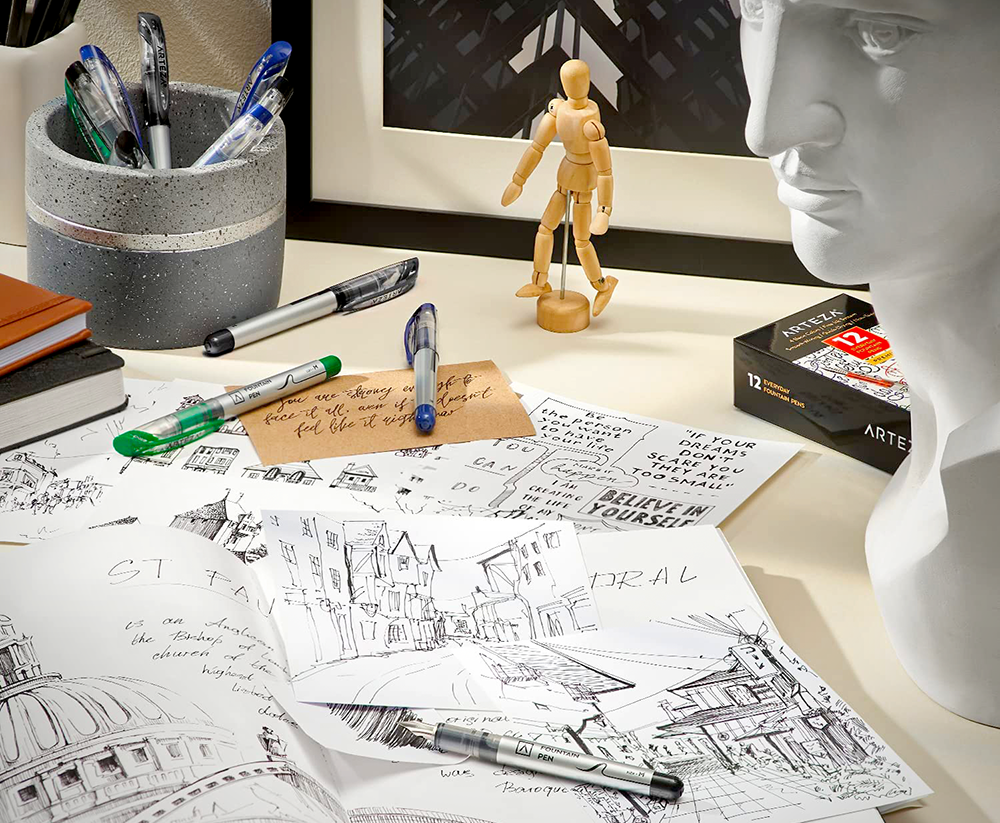
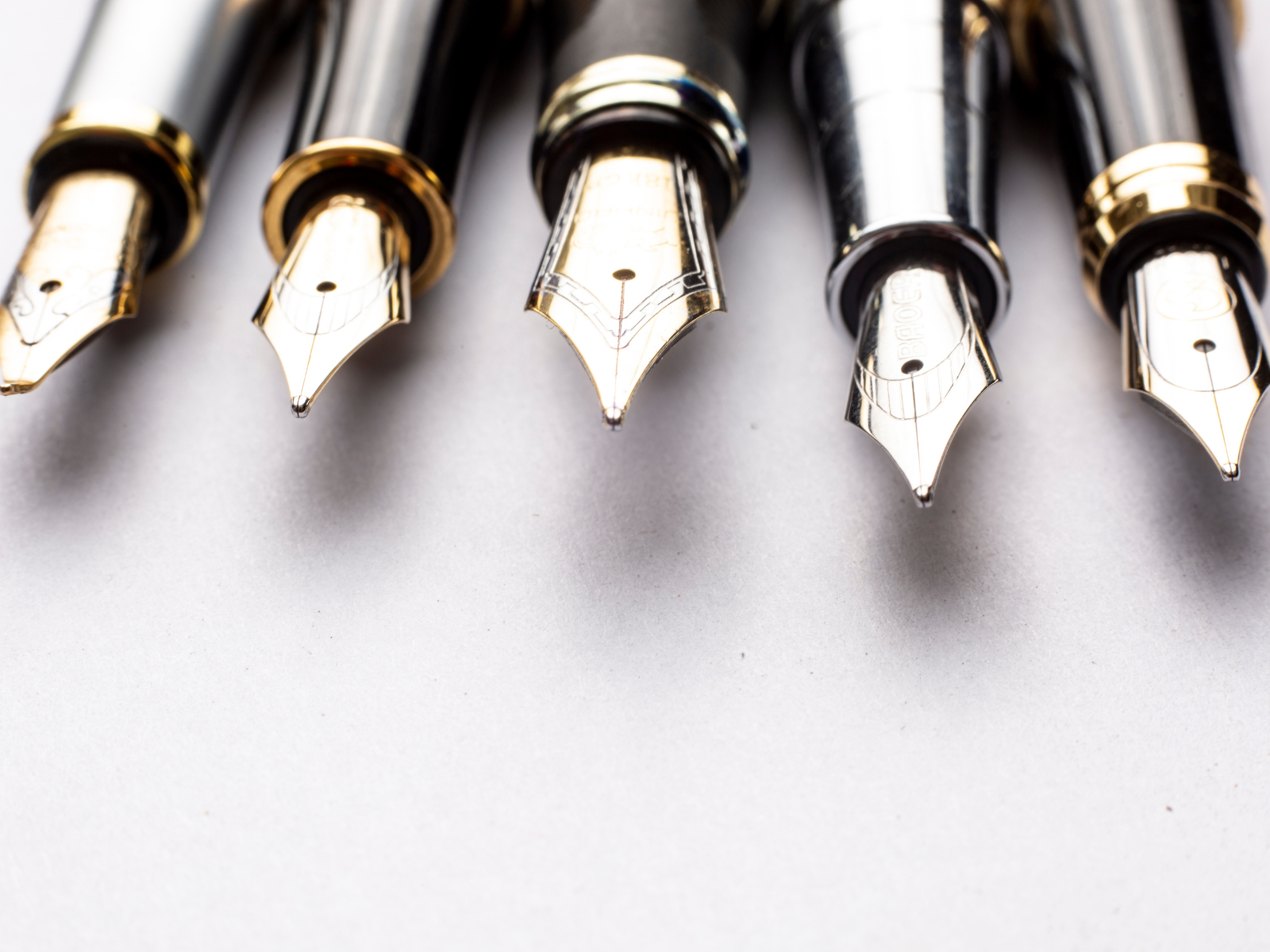
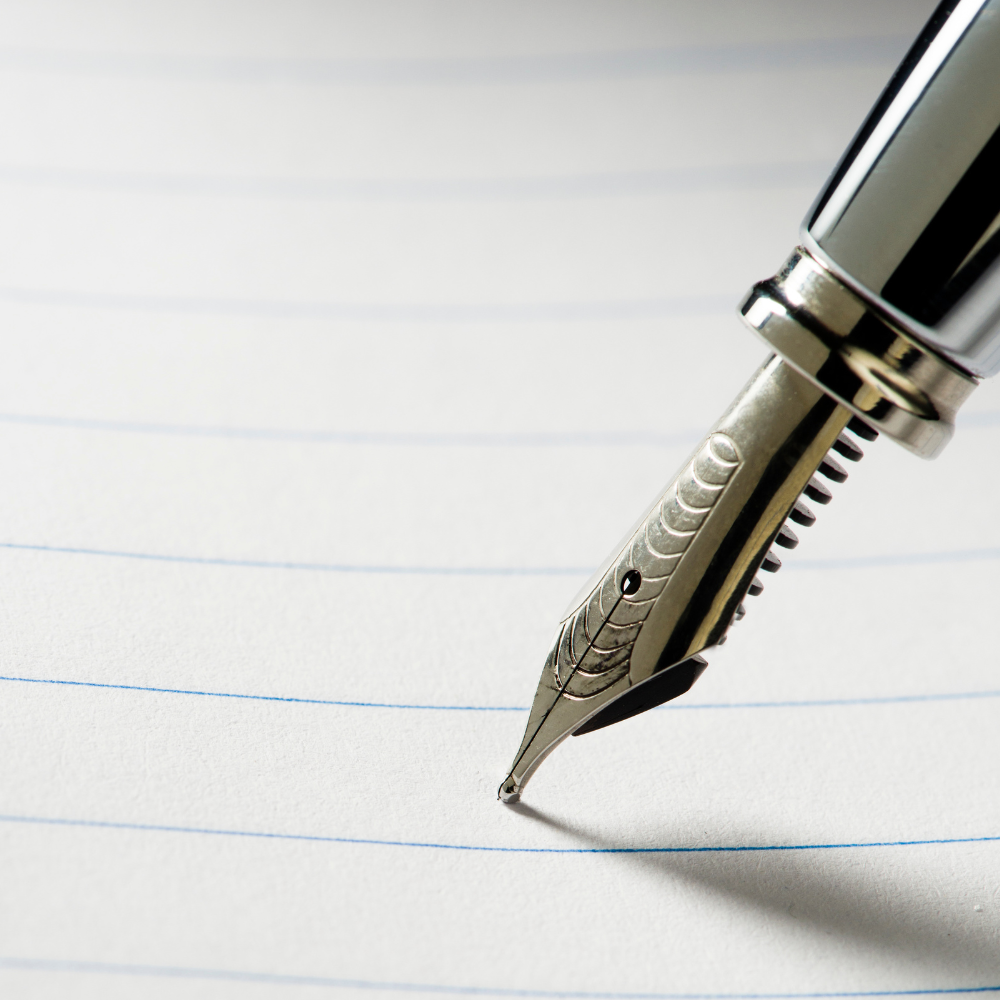
Personal Journey of Finding Your Fountain Pen
Fountain pens are not just elegant writing instruments; they are versatile tools that can enhance the artistic process.
With a variety of nib sizes and ink types, artists can achieve a range of effects, from fine details to expressive lines.
The portability and sustainability of fountain pens make them an attractive choice for artists who value tradition and environmental consciousness.
Ultimately, the journey to finding the right fountain pen for art is a personal one.
It involves experimenting with different nib sizes, ink types, and pen weights to discover what works best for your artistic vision.
Proper maintenance and a deep understanding of the mechanics of fountain pens are essential for their effective use in art.
Whether for sketching, detailed work, or calligraphy, fountain pens have proven to be a valuable asset in the artist's toolkit.
They offer an unparalleled level of control, enhance your creativity, and give you an unexpected yet aesthetically elegant approach to your art.
They're a cost-effective solution for artists who would want durable long-term tools that are easy to refill and eco-friendly.
Getting a fountain pen to bring new life to your artwork is worth exploring.
So, give the fountain pen a chance next time you're browsing the stationery section; it may just be your next favorite art tool!
FAQs about Fountain Pens
Can fountain pens be used for professional artwork?
Absolutely. Fountain pens can produce professional-level artwork, especially when the artist has mastered the control of ink flow and pressure on the nib. The quality of lines and the ability to use various inks make fountain pens suitable for professional art.
How do I prevent my fountain pen ink from smudging in my artwork?
To prevent smudging, use waterproof or permanent inks like Platinum Carbon Ink or De Atramentis Document Ink. Also, allow the ink to dry completely before layering or handling the artwork.
Are fountain pens suitable for beginners in art?
Fountain pens can be a great tool for beginners, as they encourage the development of hand control and an understanding of line quality. However, there may be a learning curve in mastering the use of the pen and maintaining it properly.
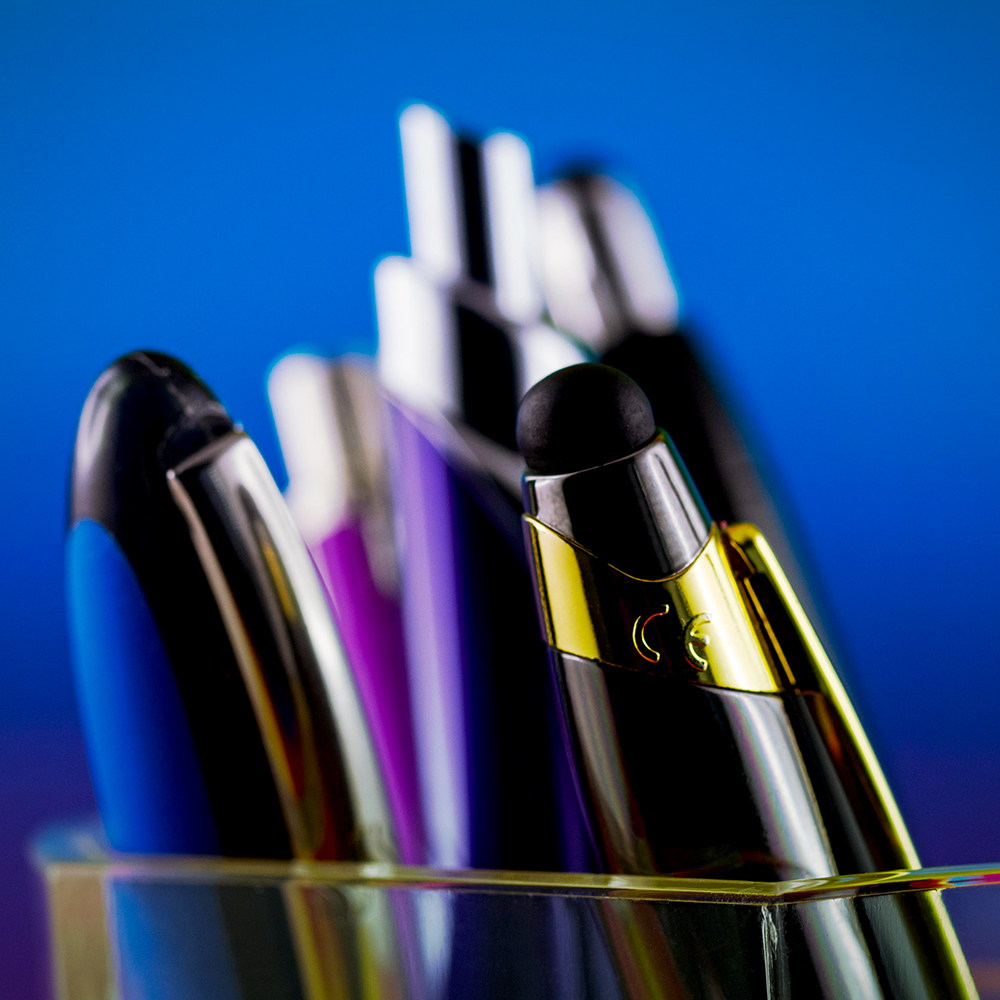
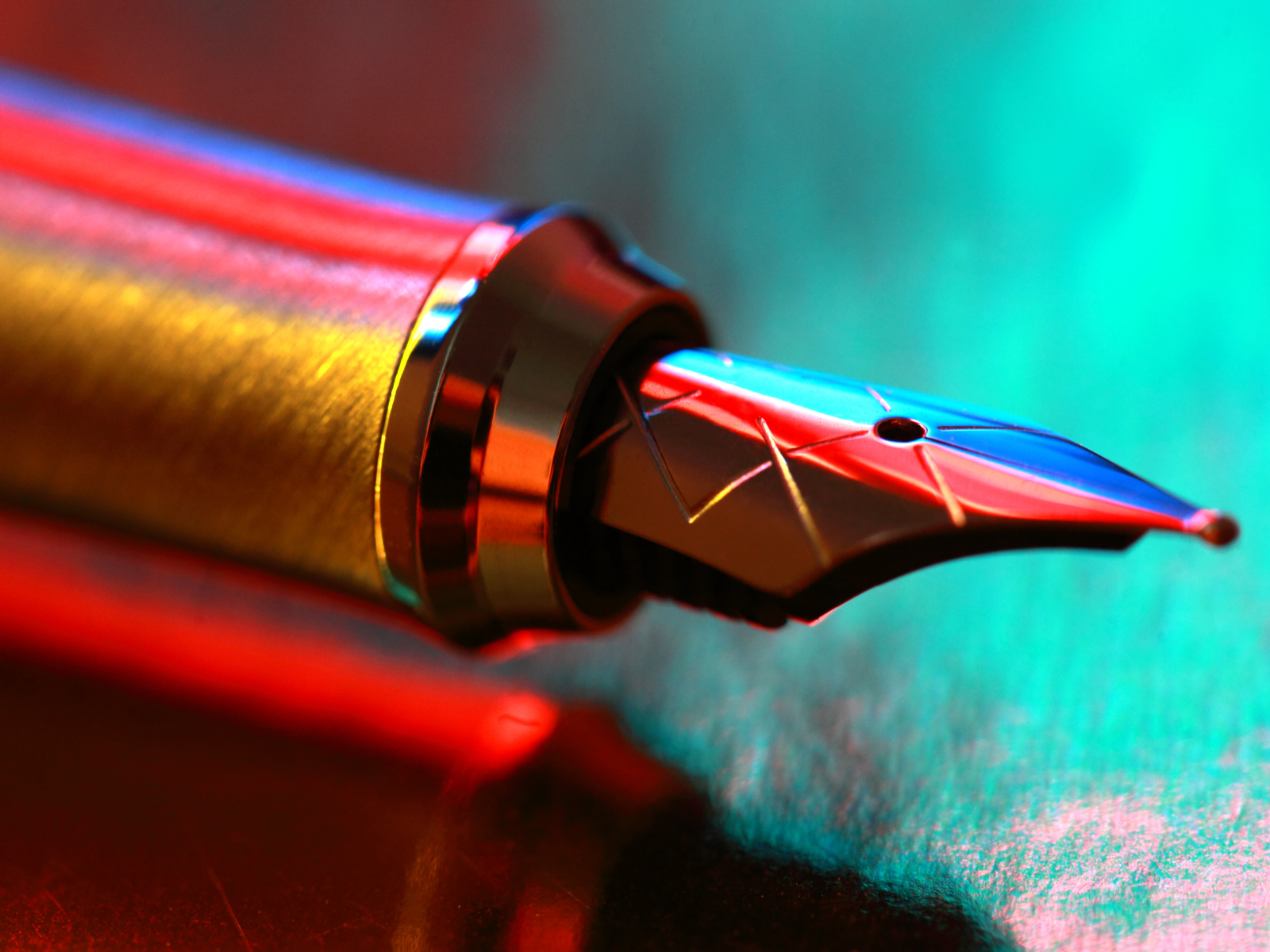
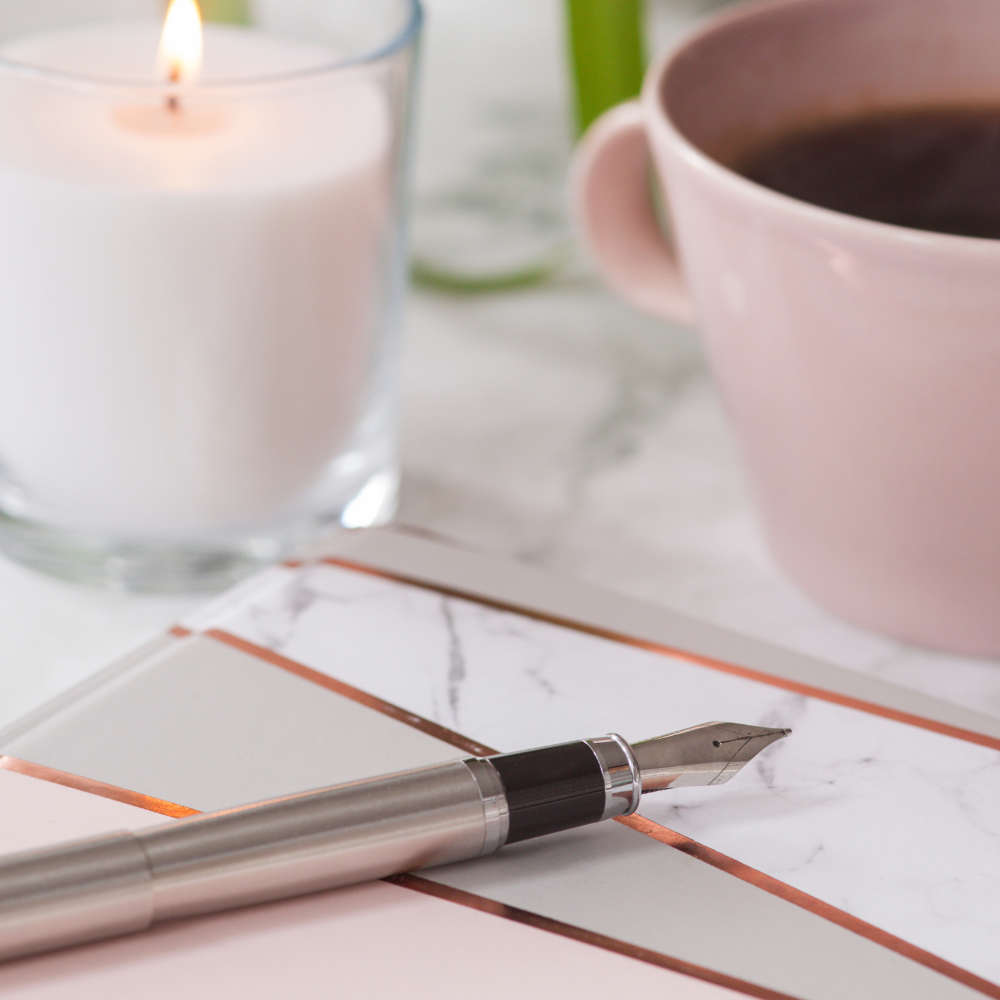
Ready to get creative with fountain pens? Check out Chroma Moma's video!
Want even more content about creativity and art?
Be sure to check out all of our creative chronicles!
Want to learn more about drawing?
Check out some of our other articles:
-What is better than a fountain pen?
